-
Plant Name & Description
Botantical Name
-
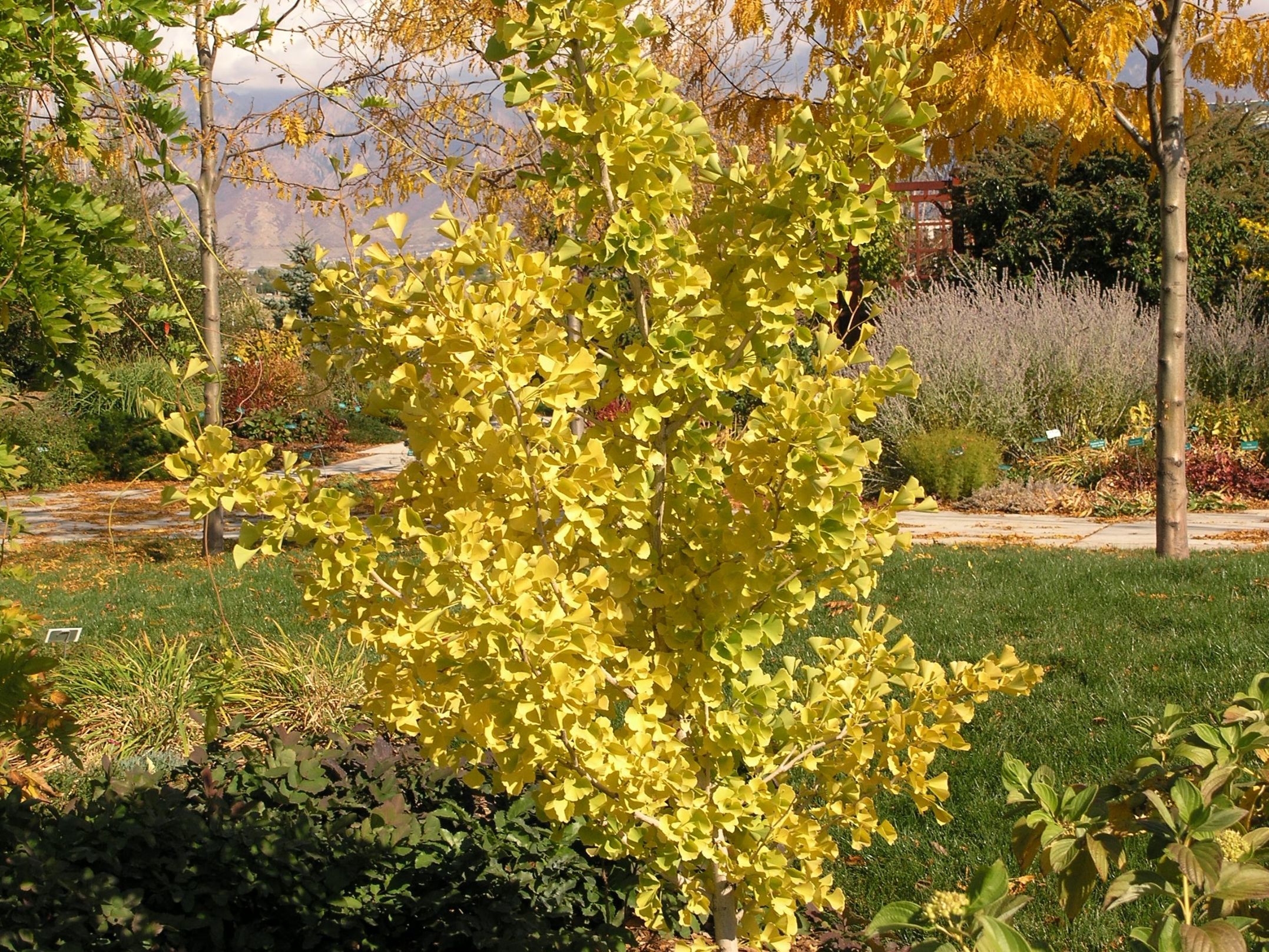
Fairmount Ginkgo Ginkgo biloba 'Fairmount'
Tall, columnar deciduous tree. Characteristic fan-shaped leaves turn bright yellow in the fall but last only briefly. Spring brings insignificant green flowers with a pleasant fragrance. This male cultivar does not set fruit. Very tolerant of urban areas and adapt well to pollution and compacted soils. A good choice for any landscape. Could be used more often.
-
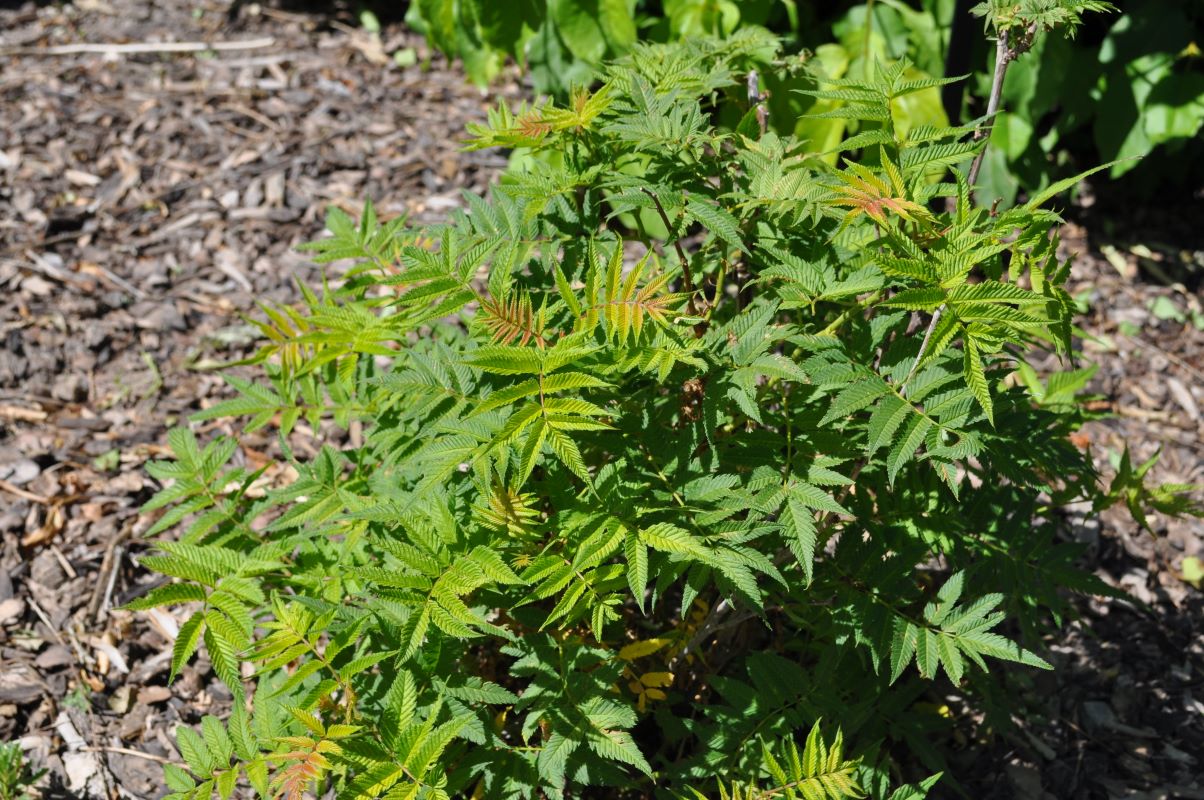
False Spirea Sorbaria sorbifolia
Deciduous shrub. The coarse serrated odd-pinnate leaves balance the delicate foamy looking white blooms. Spreads aggressively by suckers, especially in loose soil.
-
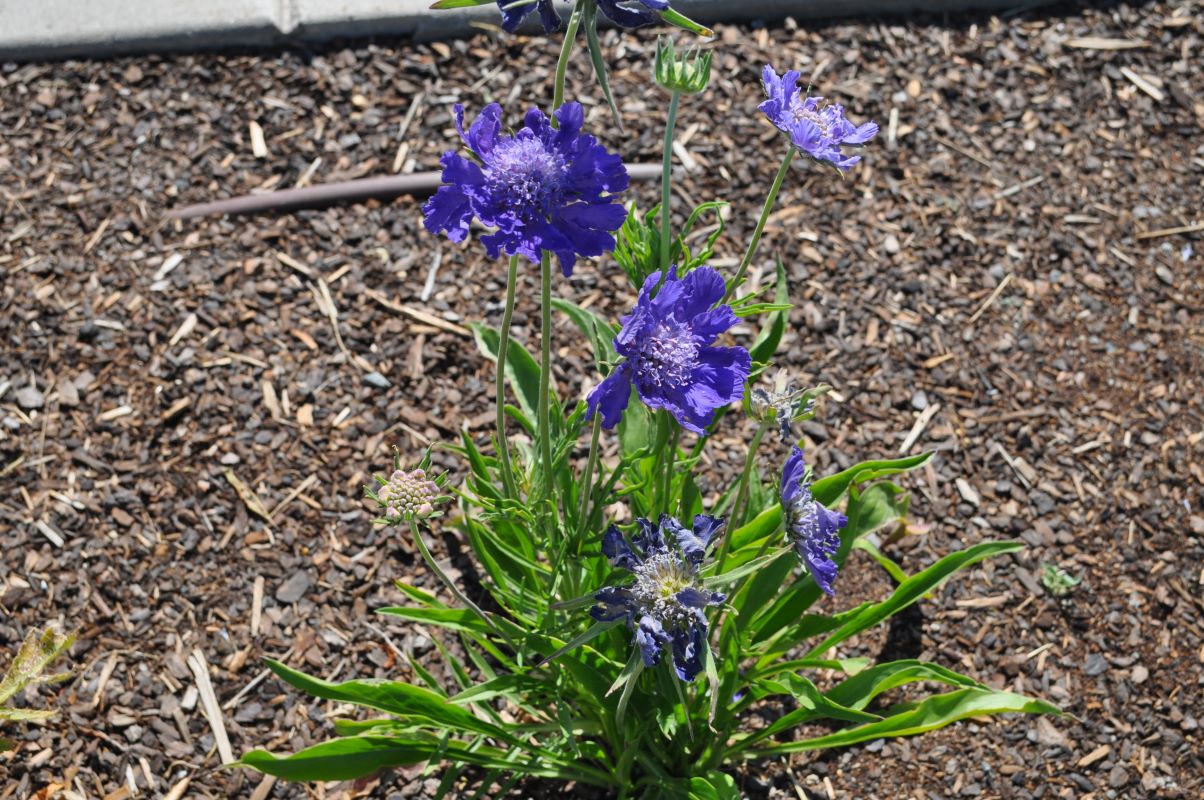
Fama Pincushion Flower Scabiosa caucasica 'Fama'
This plant has very large blue-purple flowers held on long upright stems. It makes an excellent, long lasting cut flower. It has a very long bloom time with interesting flowers that attract butterflies and other beneficial pollinators.
-

Fanfare Blanket Flower Gaillardia 'Fanfare'
This is a mounding perennial that produces bright yellow, red and orange blooms. This variety has fluted petals, which is an attractive departure from the species. Once the flower bloom is done, it turns to a red puffball, which can be removed but, since blanket flowers are so short-lived, can be allowed to reseed to begin new plants nearby. These perennials prefer lighter soil and moderate amounts of water.
-
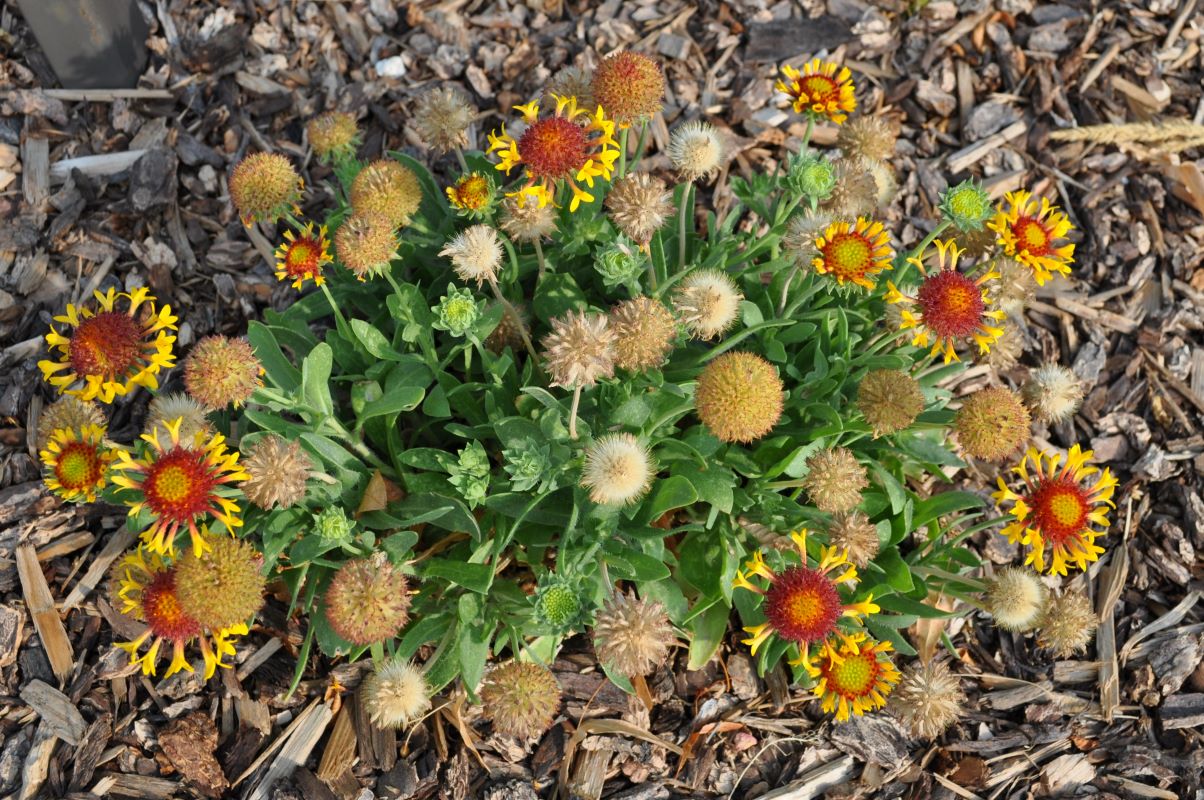
Fanfare Citronella Blanket Flower Gaillardia 'Fanfare Citronella'
This is a mounding perennial that produces bright yellow pinwheel blooms. This variety has fluted petals, which is an attractive departure from the species. Once the flower bloom is done, it turns to a red puffball, which can be removed but, since blanket flowers are so short-lived, can be allowed to reseed to begin new plants nearby. These perennials prefer light soils and moderate amounts of water.
-
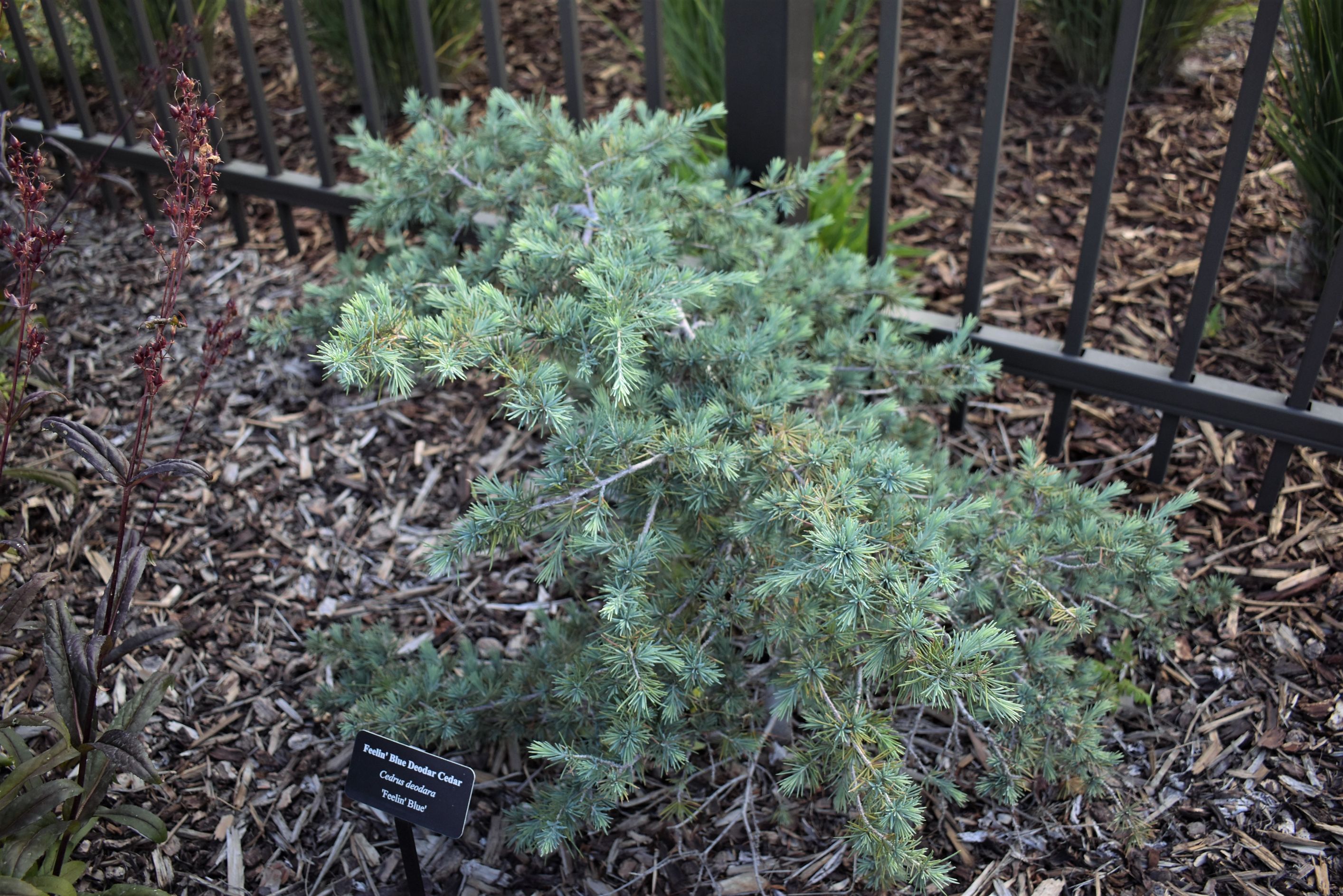
Feelin' Blue Deodar Cedar Cedrus deodara 'Feelin' Blue'
With its unique spreading form, this evergreen is the lowest growing of the dwarf cedars. The blue-green foliage gives year-round interest and is the perfect specimen for smaller spaces, rock gardens, and containers.
-
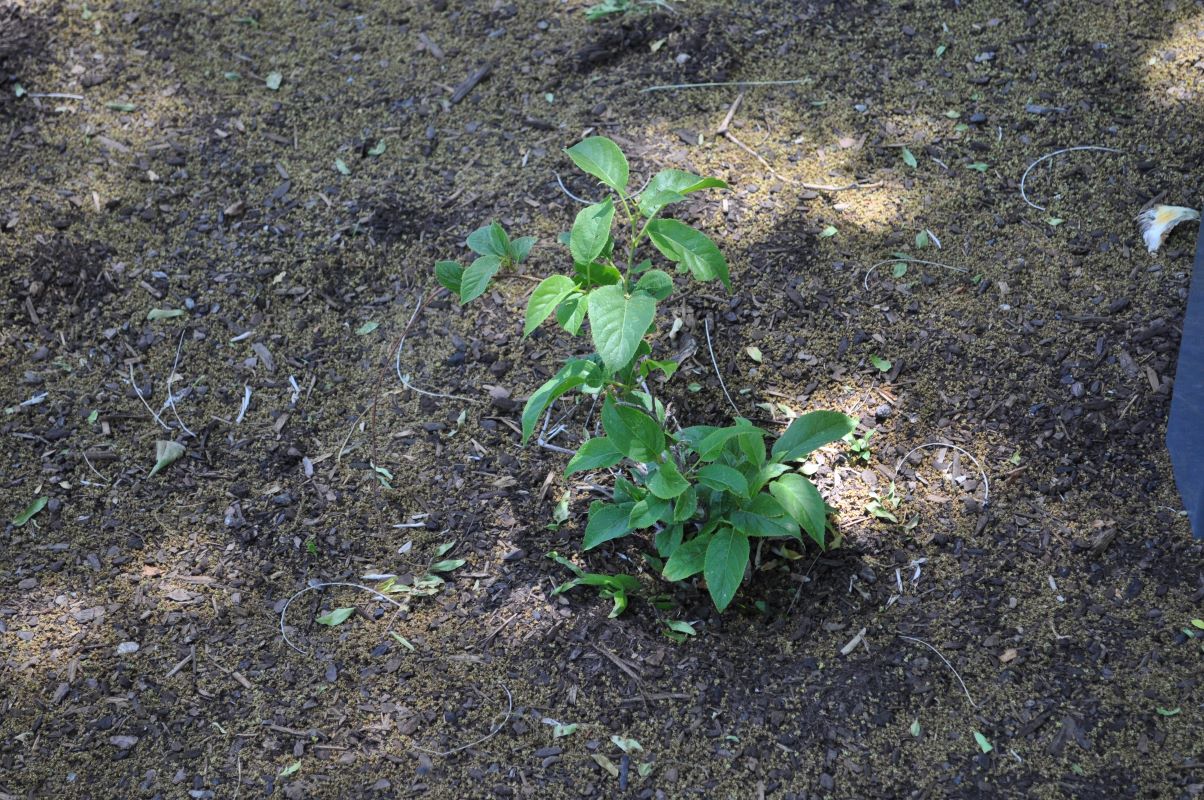
Female Hardy Kiwi Vine Actinidia arguta 'Issai'
Sweet, small kiwis on a thornless vine. The vine can grow quite rapidly, so a good support system is necessary. They are heat-tolerant and do not like wet soils. The small, smooth-skinned green fruit tastes similar, but is sweeter than the larger kiwi fruit found in stores. They are eaten more like grapes. The fruit mature in September-October. ‘Issai’ is a slower growing, self-fertile variety, but planting a male vine can help increase fruit production. Fruit can be found one year after planting.
-
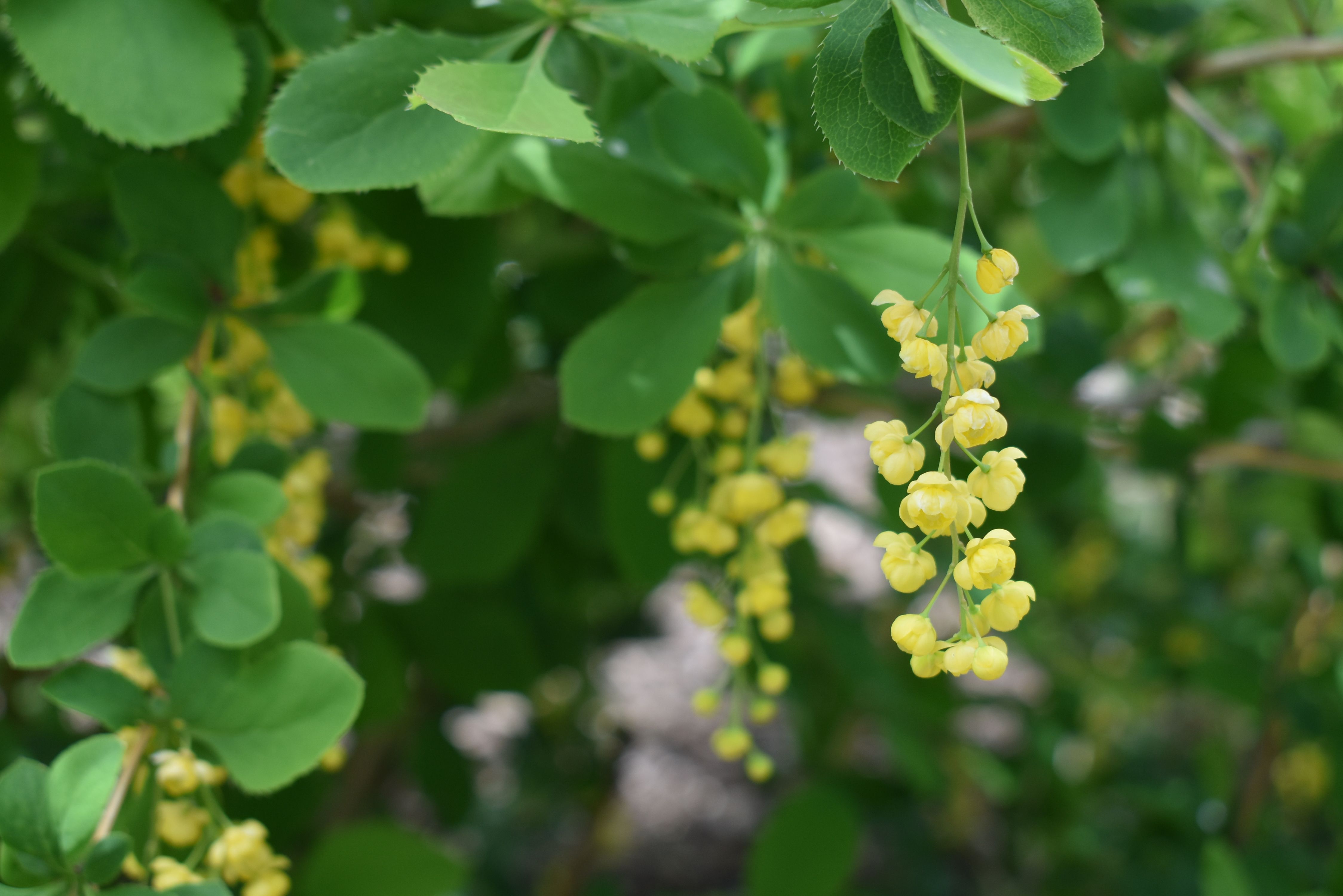
Fendler's Barberry Berberis fendleri
This is a fast-growing shrub. It has rounded leaves and sharp thorns. The flowers are bright yellow and appear in the spring. Red fruit then develops and lasts through the winter. The fruit is edible tasting like tart cherries. To get a good fruit set, it is best to have at least two or three of these barberries for cross pollination. This barberry prefers rich soil and fairly consistent moisture.
-
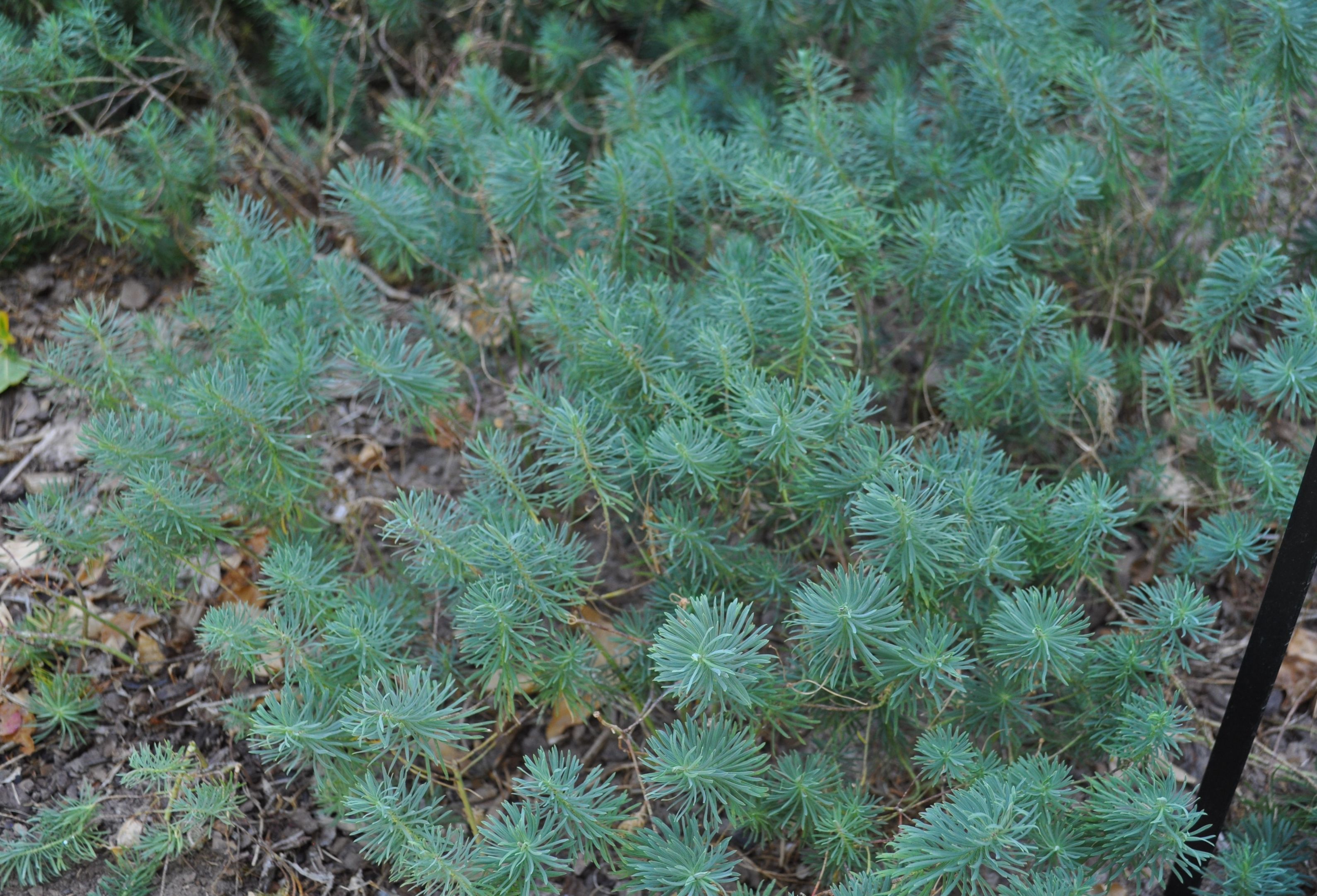
Fens Ruby Cypress Spurge Euphorbia cyparissias 'Fens Ruby'
Spreading herbaceous perennial with fine tezxtured foliage. New stems are red-ruby turning to blue-green in maturity. Stunning chartreuse flowers come on in early to mid summer. Spreads by underground stems. In certain areas it may become invasive. Good choice for a groundcover.
-
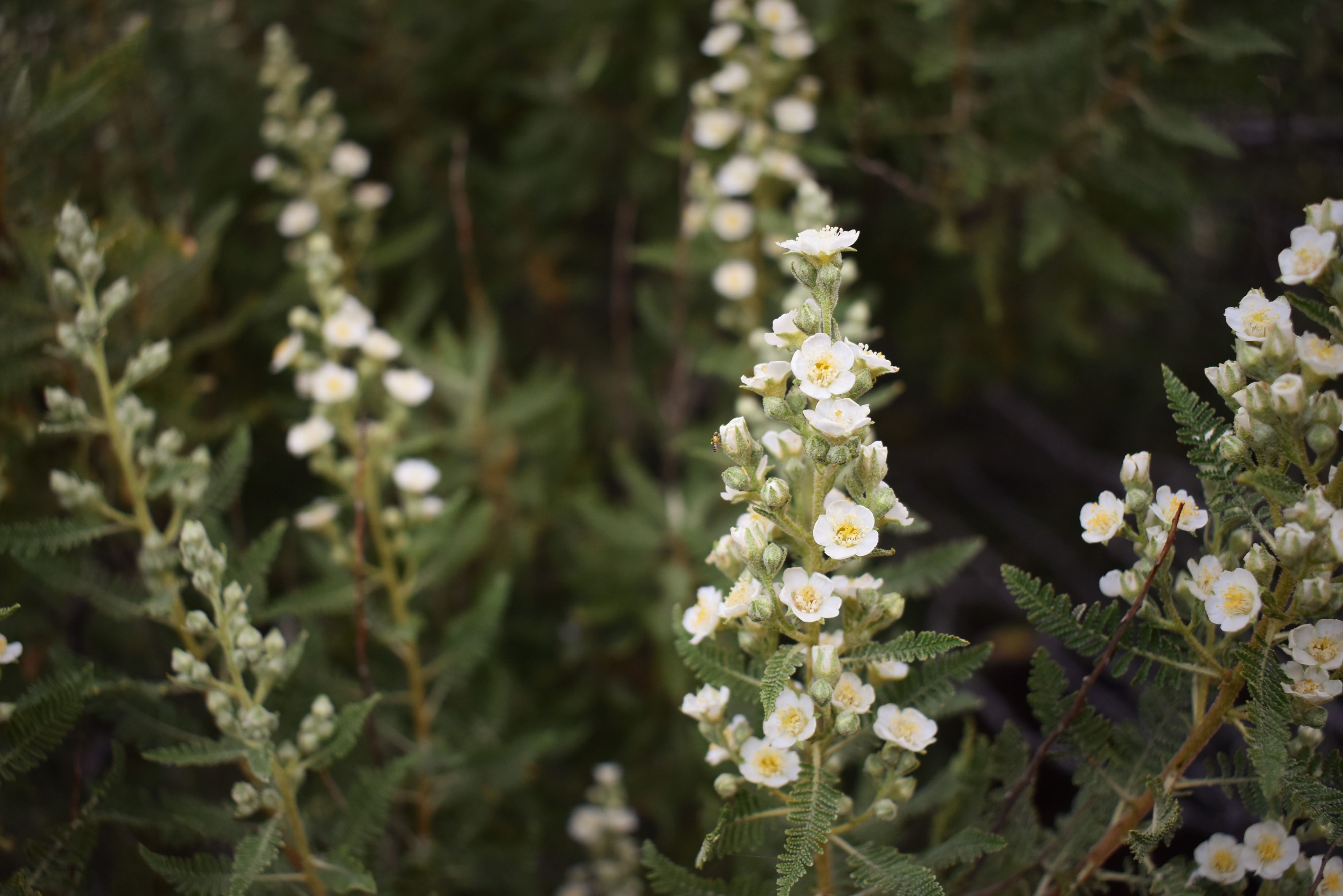
Fernbush Chamaebatiaria millefolium
Semi-evergreen shrub native to the western United States. Foliage resembles fern-leaves somewhat like the garden tansy. White clusters of rose-like flowers appear in mid to late-summer. Bark is red and shreddy. Requires very little additional moisture once established. Will adapt to many soil types.
-
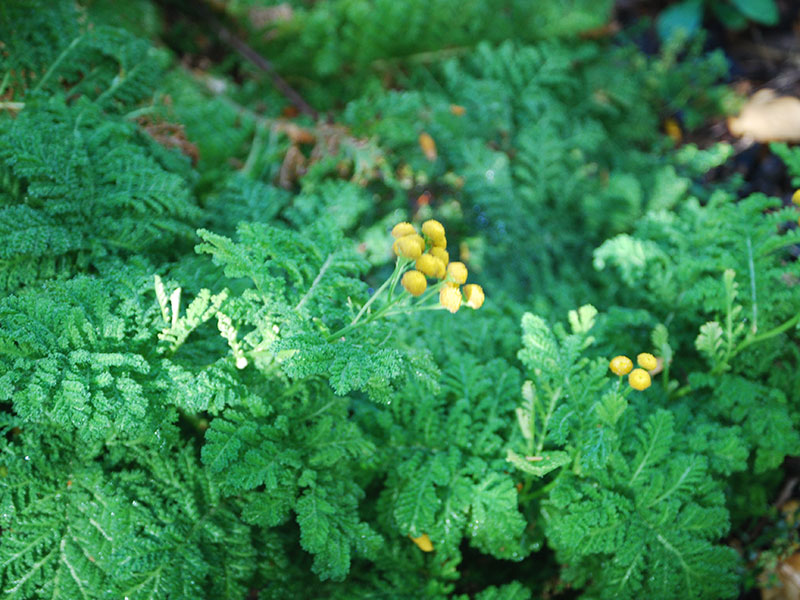
Fernleaf Tansy Tanacetum vulgare var. crispum
This perennial member of the sunflower family is grown mostly for fern-like leaves with curled margins. It produces button-like yellow flowers in the summer that, while not the main reason for growing this tansy, are an added benefit. It is said to have medicinal qualities and is possibly repellant to mosquitoes.
-
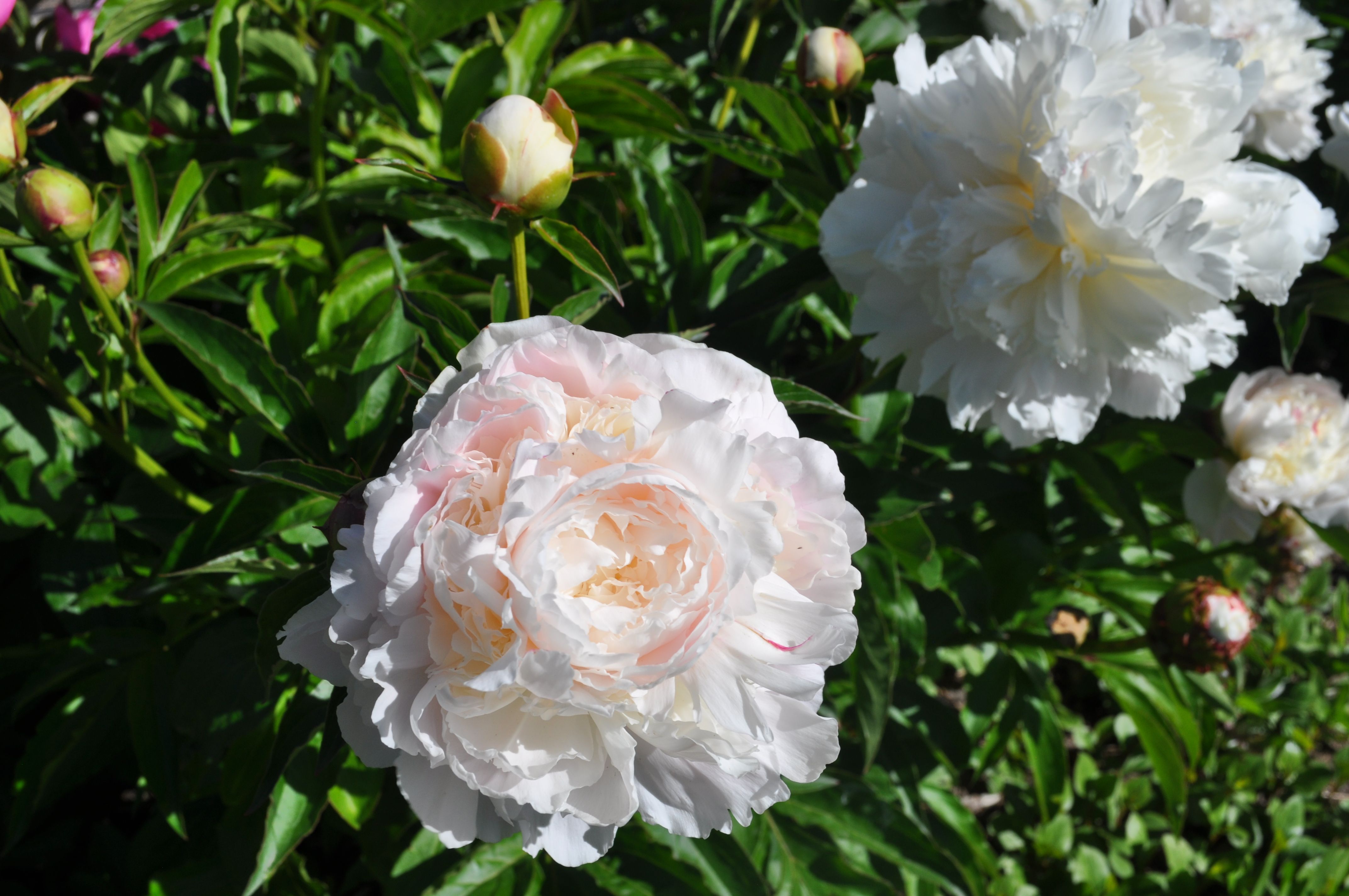
Festiva Maxima Peony Paeonia lactiflora 'Festiva Maxima'
Clump-forming, shrubby herbaceous perennial. Abundant mid-green deeply-lobed foliage grows on stiff upright stems. Large fragrant double white flowers are loose and irregularly margined. Center petals are flecked with red at the bases. Plant in fertile well-drained soils. Tolerates some drought once established.
-
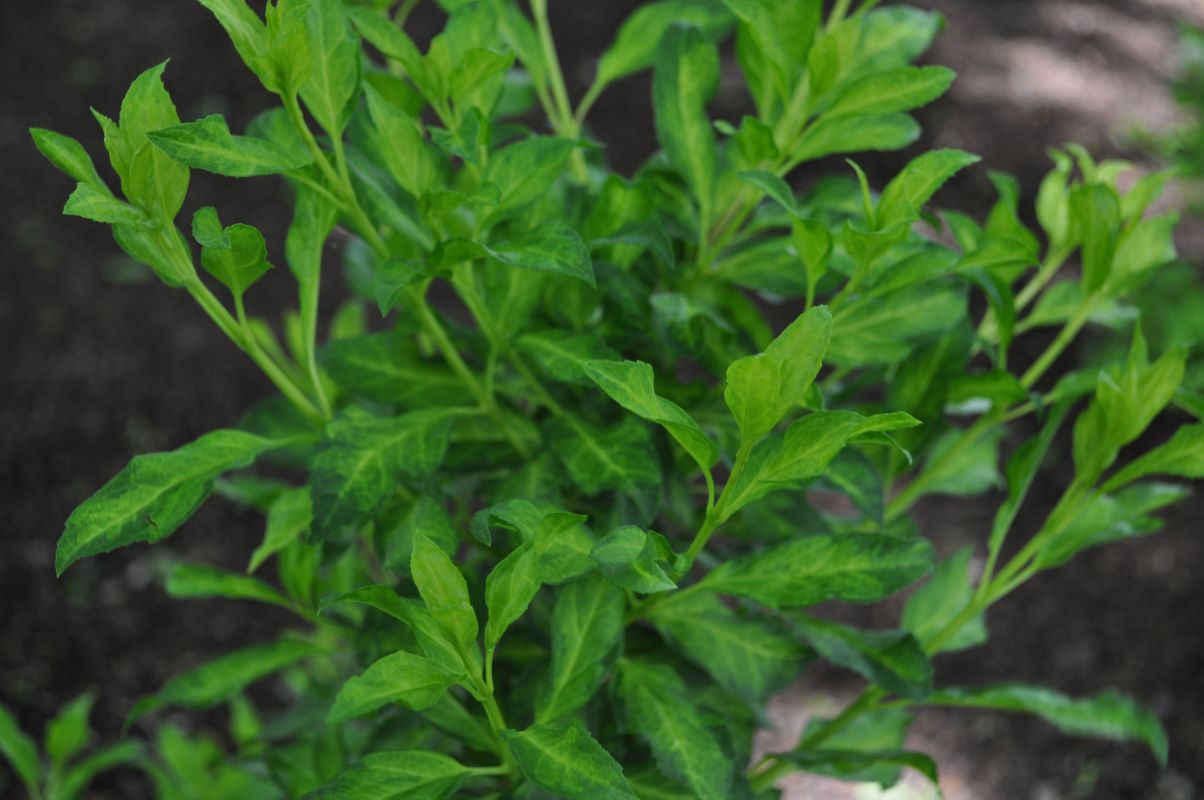
Fiesta Forsythia Forsythia x intermedia 'Fiesta'
This is an upright shrub that develops an arching habit as it matures. It has smooth, lemon yellow leaves that are edged with green. The flowers are yellow with four prominent petals, and develop in the spring. This forsythia will grow in average soils that have good drainage.
-
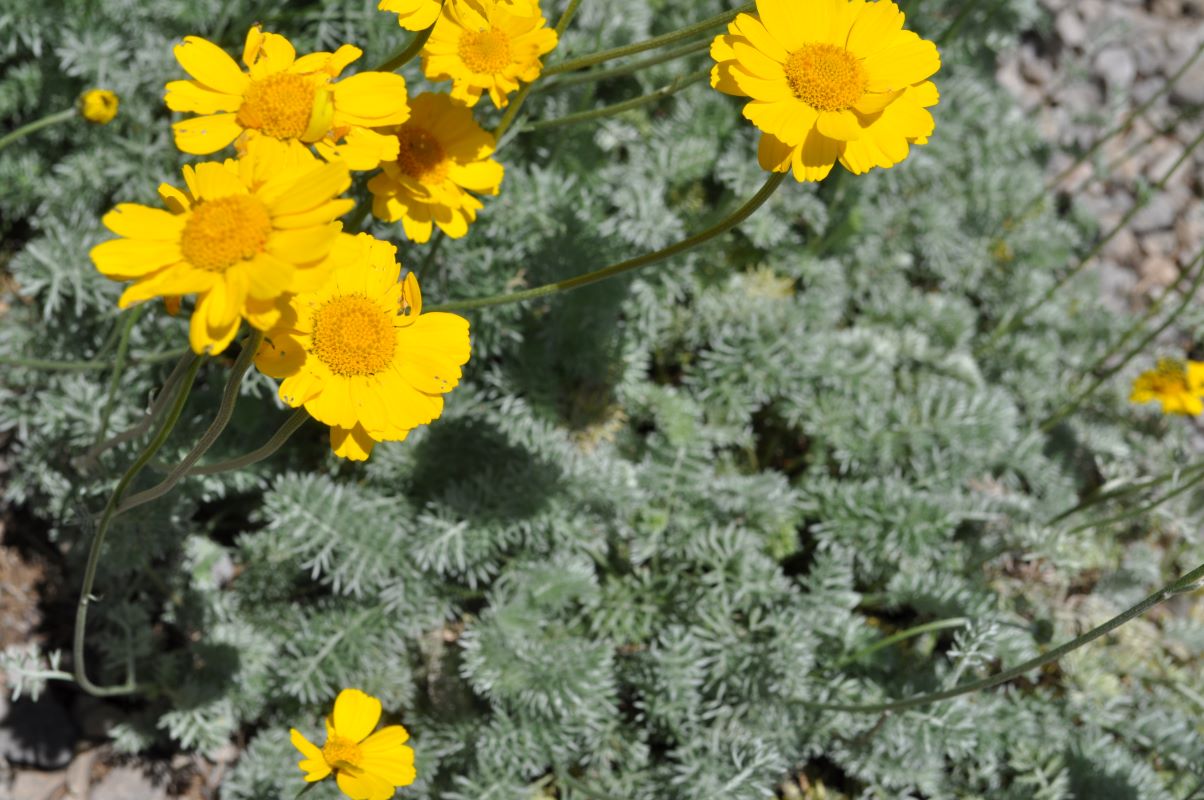
Filigree Daisy Anthemis marschalliana
Lacy, semi-evergreen silver foliage forms a carpet throughout the year. Spring brings long-lasting, sulfur yellow flowers. It prefers well-drained soils, but is adaptable.
-
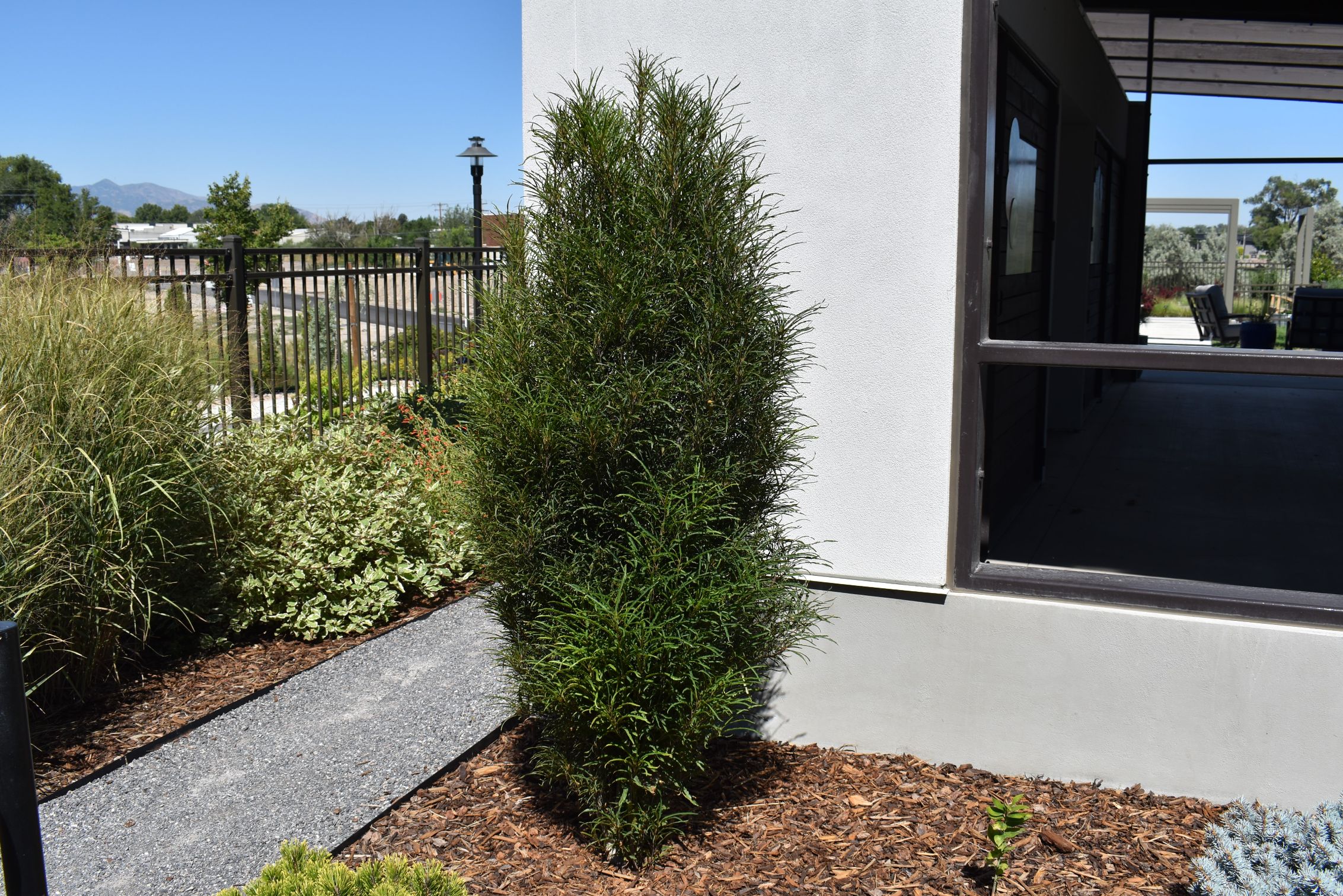
Fine Line Buckthorn Frangula alnus (syn Rhamnus frangula) 'Ron Williams'
Fern-like foliage and a columnar shape set this dark-green shrub apart. It works great in narrow spaces and is non-invasive thanks to its sparse, unviable seed. Its flowers are small and of no consequence.
-
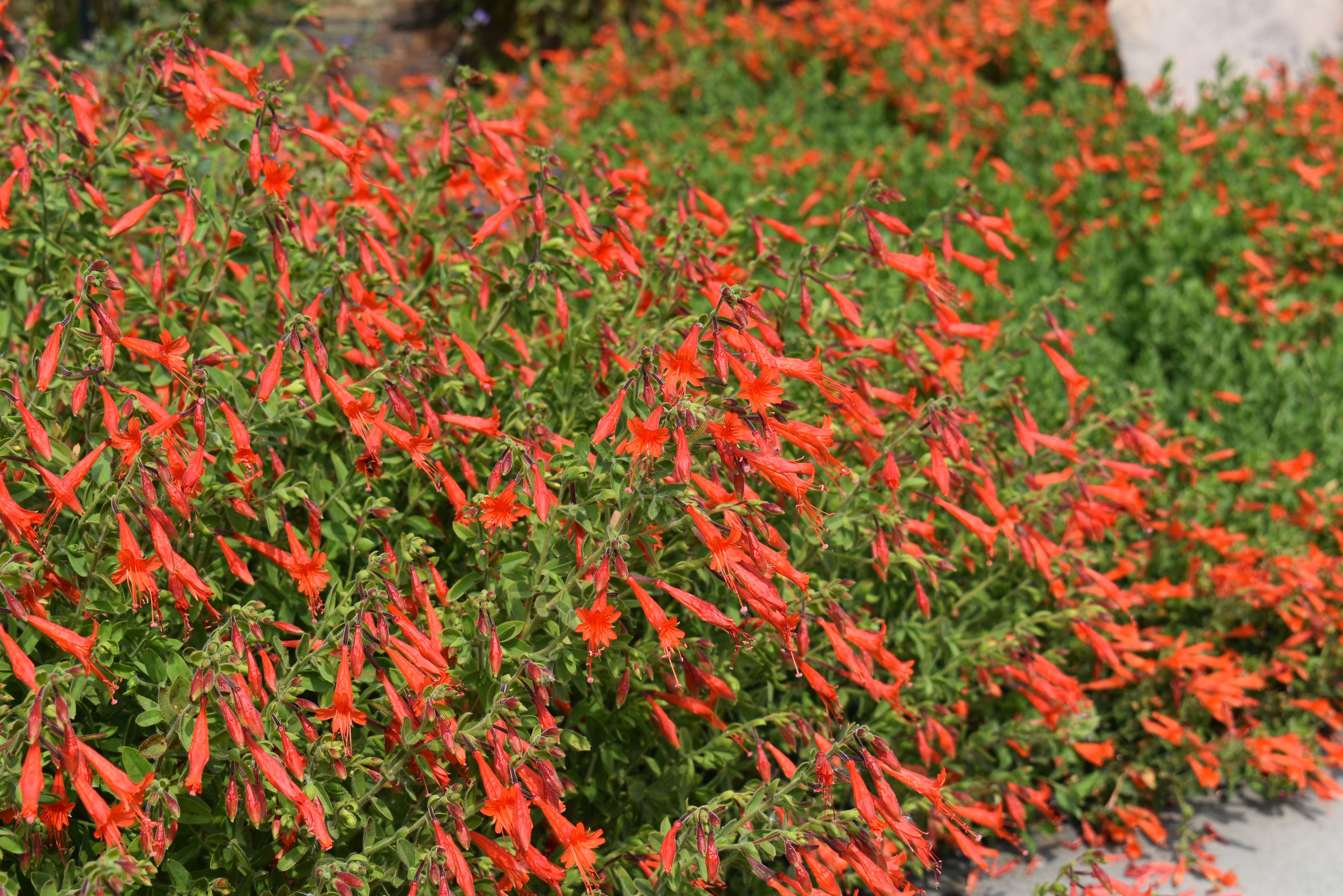
Fire Chalice Epilobium (syn Zauschneria) californica
Upright, weakly spreading herbaceous perennial native to the western United States. Dark-green lance-shaped foliage is slightly fuzzy. Bright orange tubular flowers bloom throughout the summer. Performs well with very little water. Some of the specimens in our garden receive no additional moisture. Attracts hummingbirds.
-
Fire Light Hydrangea Hydrangea paniculata 'SMHPFL'
A reliable hydrangea with large flower panicles and strong stems. The long-blooming flower heads start out cream and age to pink then bright red, making great fresh or dried cut flowers. Very low-maintenance and hardy.
-
Fire Spinner Ice Plant Delosperma 'P001S'
A low-growing succulent, Fire Spinner likes the heat and should thrive in Utah's soil. Bright, tri-colored flowers cover fleshy green leaves in late-spring through summer. Do not overwater. Will require some additional water to perform well in the summer.
-
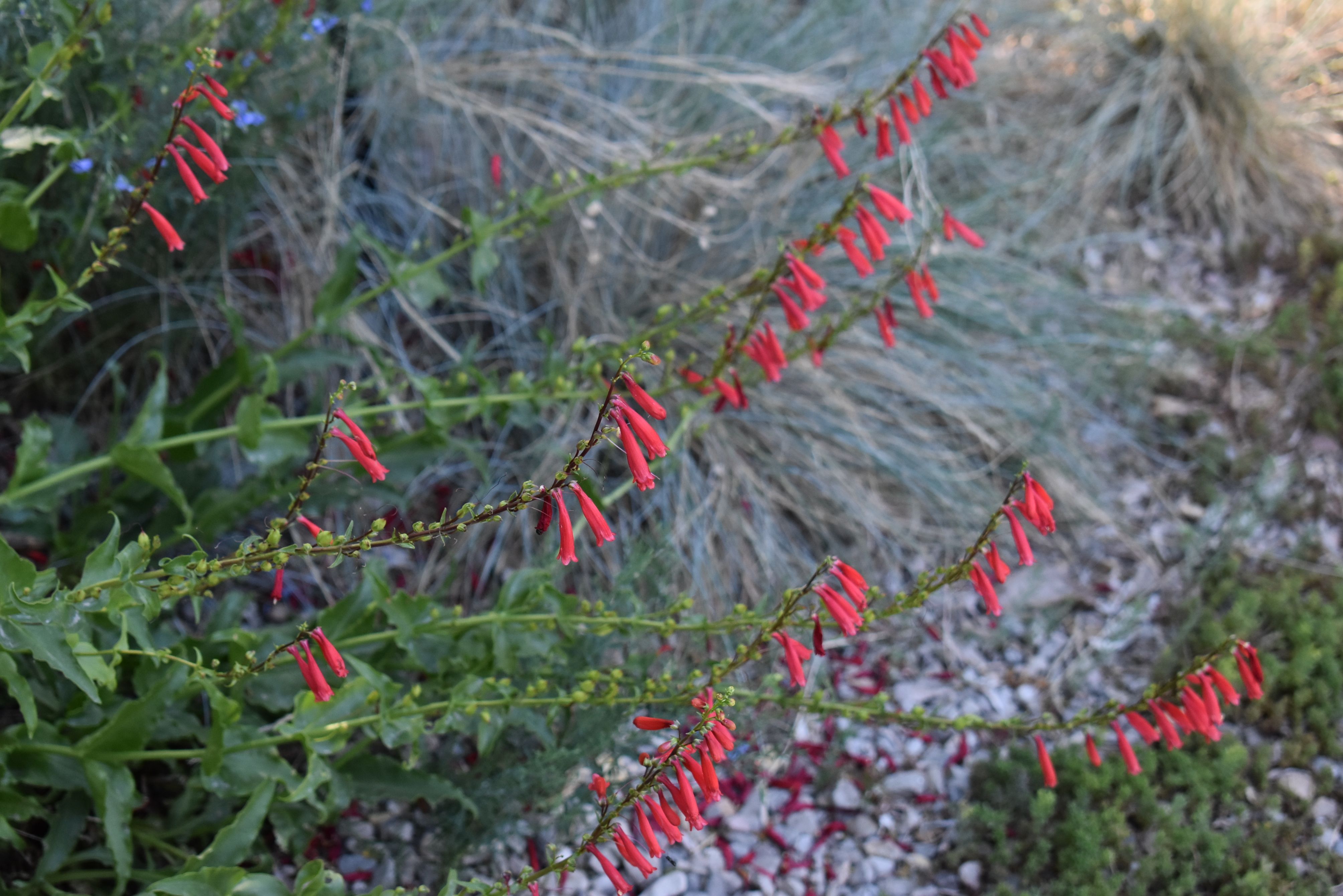
Firecracker Penstemon Penstemon eatonii
Upright, woody-based, evergreen or semi-evergreen perennial with blue-green leaves. In early summer, bears tubular, bright scarlet flowers. Prefers poor to moderately fertile, well drained soil and full sun. Great for dry desert-scapes. Attracts butterflies.
-
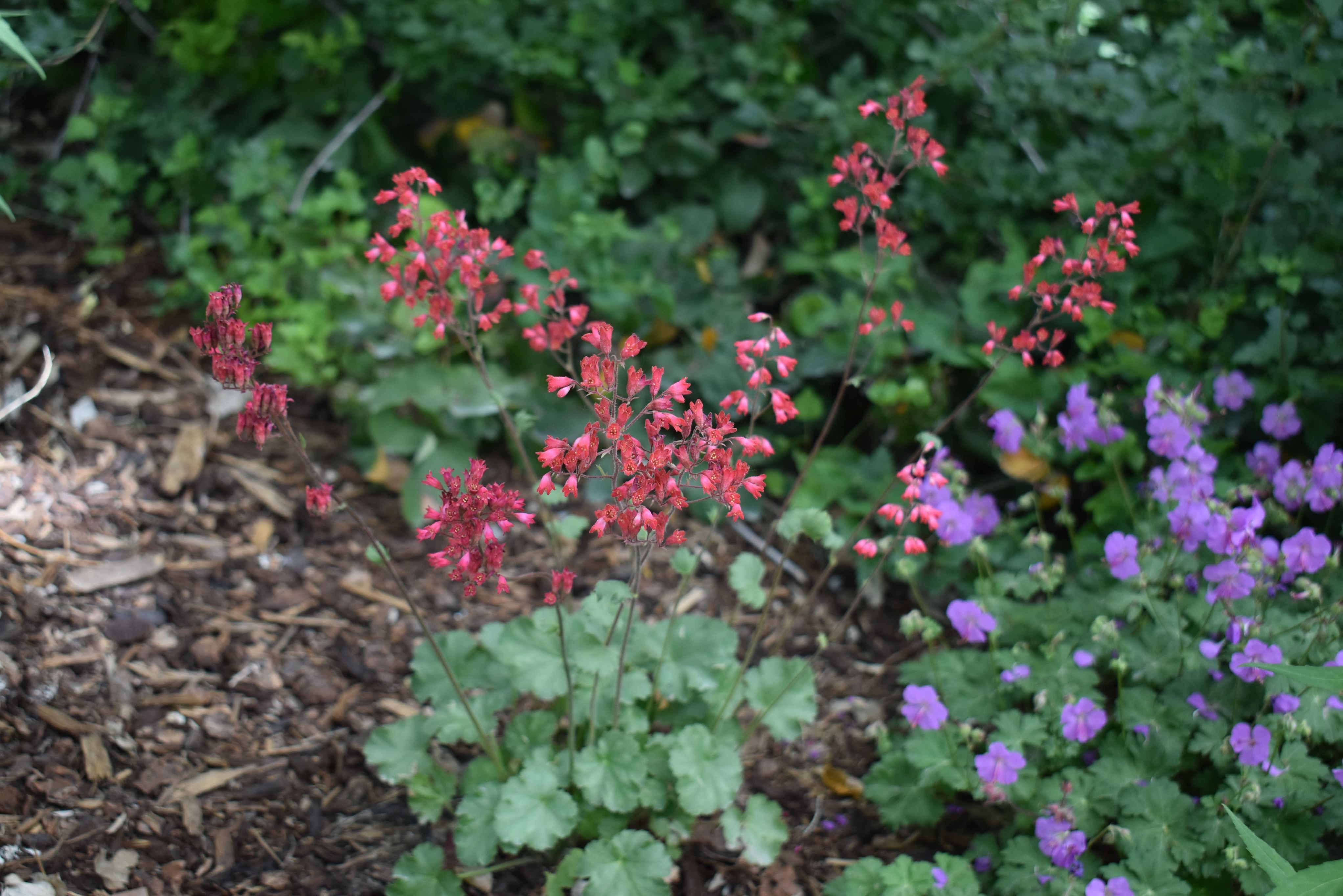
Firefly Coral Bells Heuchera sanguinea 'Firefly'
A showy selection of a wildflower native to Arizona. Many tall, thin stalks hold clouds of fragrant, bright cherry-red flowers over neat mounds of scalloped green leaves. A hummingbird-friendly addition to pots and part-shade gardens.
-
Firefly Oriental Spruce Picea orientalis 'Firefly'
This dwarf spruce's new growth displays bright yellow, densely packed, classic thin needles that soften to a gold as the season progresses giving off that “firefly” light all year long. The vivid yellow needles contrast beautifully with the green interior foliage. This spruce is smaller in size and compact in habit. Putting this spruce in a shady area will decrease the yellow color in the leaves but placing it in direct afternoon sun can burn the foliage for the first few years until the roots get established.
-
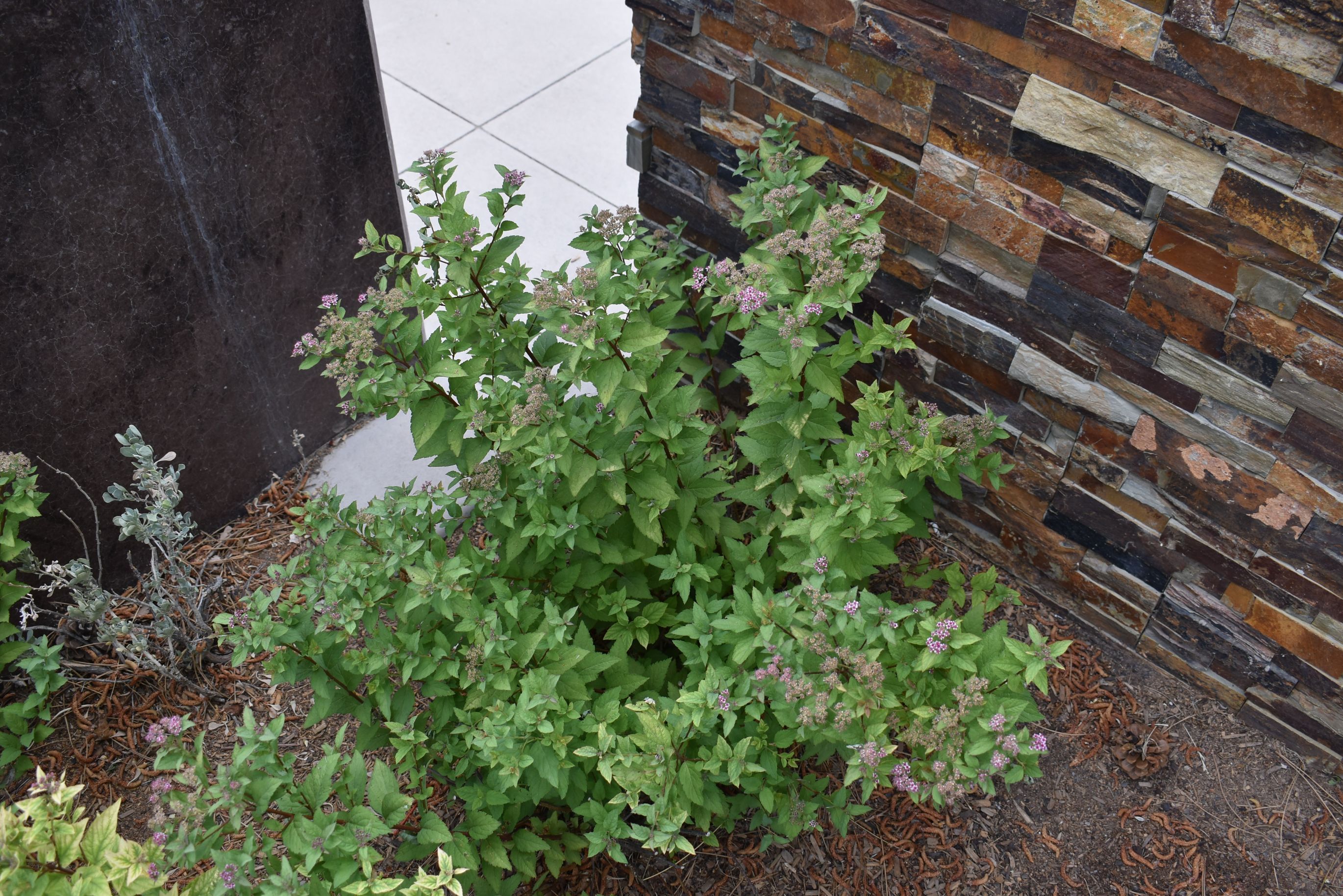
Firelight Spirea Spiraea japonica 'Firelight'
Medium sized, rounded deciduous shrub. Produces abundant flat clusters or rose pink flowers in mid to late spring into the summer. Young leaves emerge yellow and red and turn dark green when mature. Removing older branches in the spring will promote healthy growth.
-
Firepower Nandina Nandina domestica 'Firepower'
One of the more colorful nandinas with new foliage beginning a refreshing green color, taking on warm red highlights as it ages and turning fully red in fall. The vibrant color may last through the winter. ‘Firepower’ will add striking interest and beauty in borders, mass planting and containers. When given room to grow to its full potential, it will need very little care and no pruning.
-
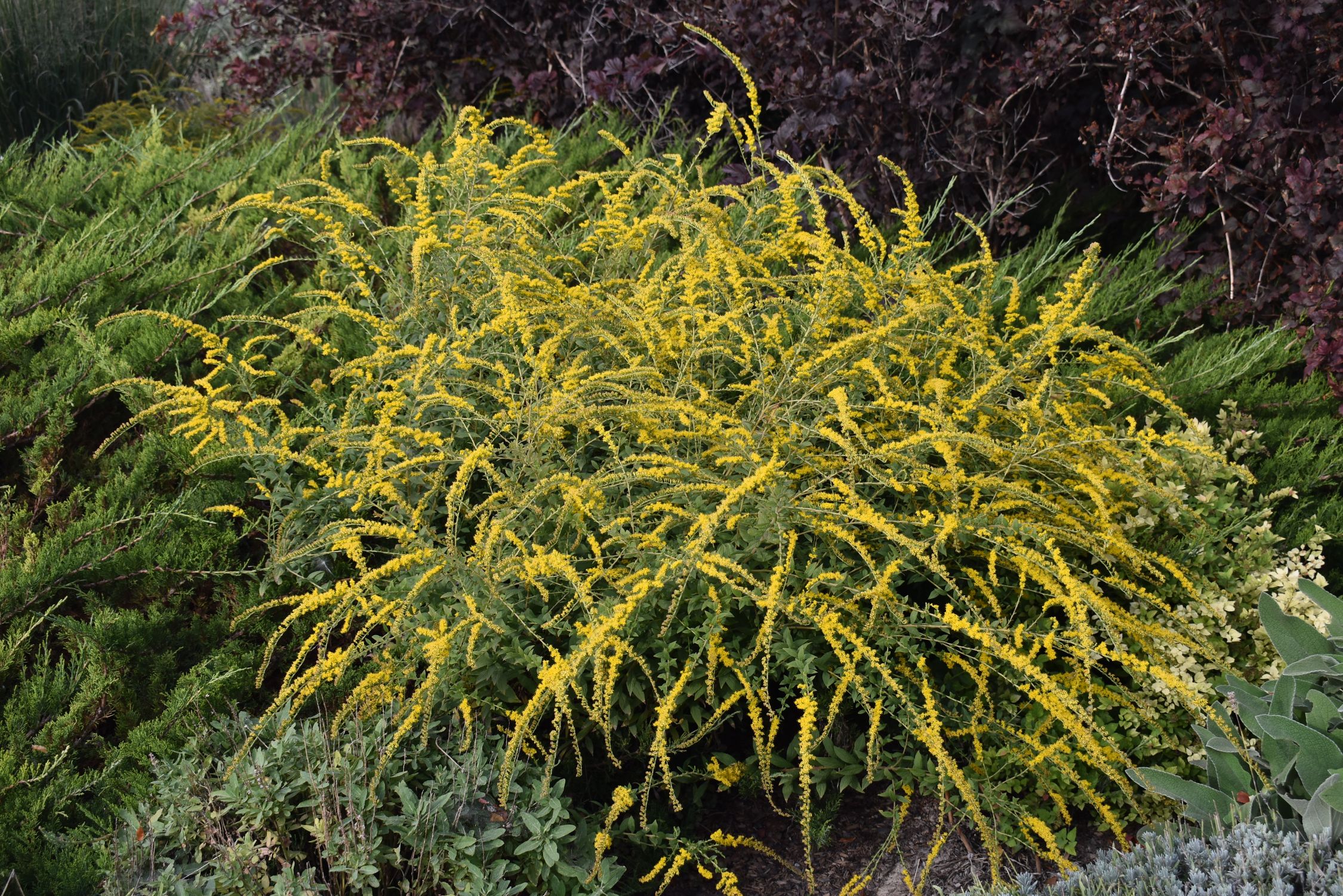
Fireworks Goldenrod Solidago rugosa 'Fireworks'
Panicles of golden yellow flowers burst along stiff, thin branches in late-summer to early-fall. The stems form clouds of fine green foliage. It is tolerant of many soil conditions and requires little maintenance.
-
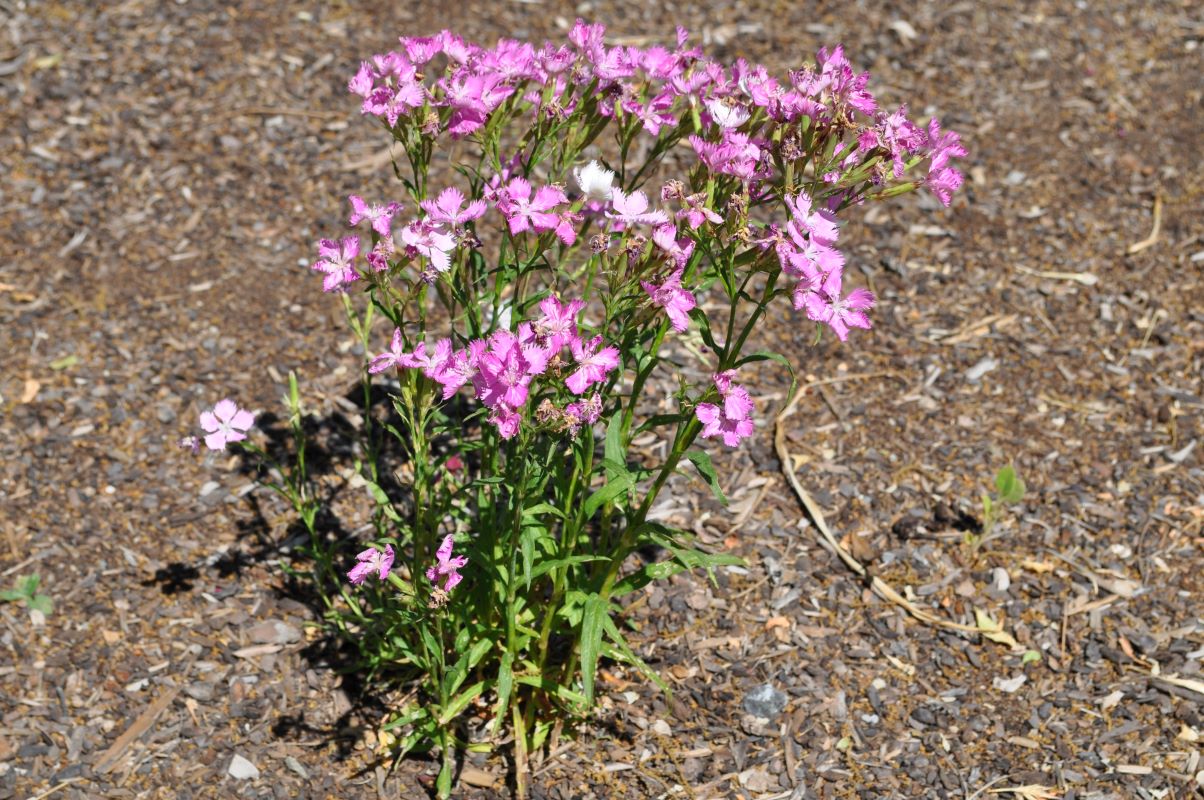
First Love Cheddar Pink Dianthus 'First Love'
This compact perennial forms a mound of semi-evergreen foliage. Starting in late spring, delicate blossoms cover the foliage in abundance. The flowers range in color from vibrant and soft pinks to pure whites.
-
First Snow Spirea Spiraea x cinerea 'Grefsheim'
Dense, gracefully branching, deciduous shrub. Produces abundant pure white flowers in early-spring before the leaves emerge. Narrow, sea-green leaves grow on closely spaced, cascading branches. Excellent choice for covering exposed foundations.
-
Flame Grass Miscanthus 'Purpurascens'
A clump forming ornamental grass. Mid-green grass blades are tinged with red and turn a brilliant red-orange in the fall. The leaves retain a burgundy color through winter. Silvery seedheads appear in late summer turning to tan in the fall. It is tolerant of a wide range of soils but prefers regular watering.
-
Flower Carpet Pink Splash Groundcover Rose Rosa 'Noasplash'
This compact, groundcover rose is perfect for borders, mass plantings and containers. It has glossy green foliage which creates a beautiful backdrop for the blossoms. Spring brings an abundance of two-toned pink flowers that bloom throughout the summer and into the early fall.
-

Flying Saucers Coreopsis Coreopsis grandiflora 'Walcoreop'
A compact coreopsis with solitary, yellow, daisy-like flowers that bloom from late spring to late summer. Grows best in dry to medium well drained soil in full sun. Loves poor or rocky soils. Prompt deadheading of spent flowers encourages additional blooming. Does not self seed. Tends to sprawl if grown in moist or fertile soil.
-
Forest Pansy Redbud Cercis canadensis 'Forest Pansy'
Small, deciduous, purple-leaved understory tree. Available with either multiple stems or a single trunk. Numerous dark pink flowers bloom in early spring before the leaves emerge. Heart-shaped leaves emerge reddish-purple turning more green through the year. Difficult to transplant.
-
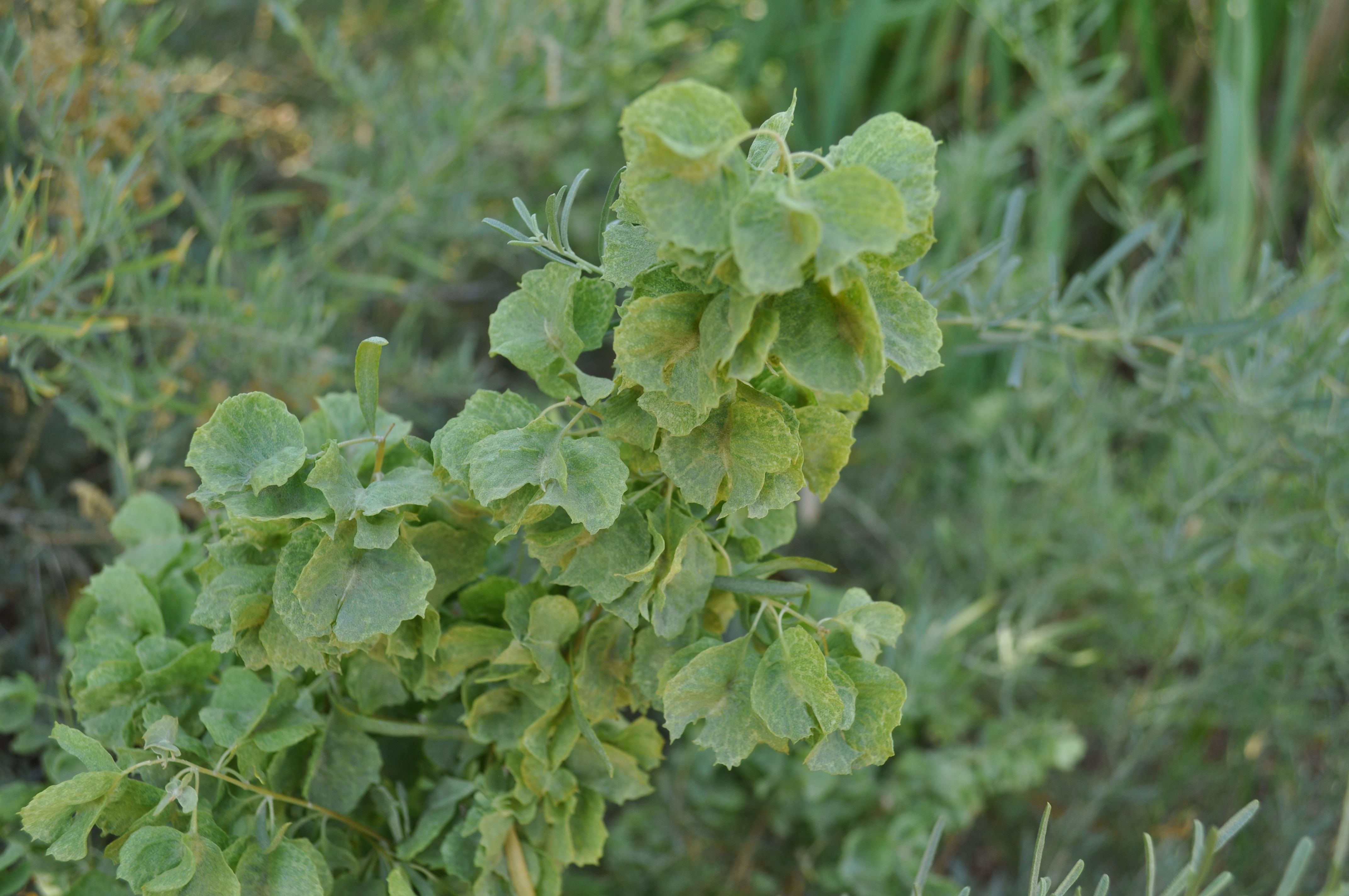
Four-Wing Saltbrush Atriplex canescens
Very tough semi-evergreen shrub with variable form, native to western United States. Small silvery-gray leaves last most of the year. Tiny inconspicuous yellow flowers appear in spring. Dried fruits are interesting and can be used in flower arrangements. Best grown in a native-style landscape; may not be compatible in more formal plantings. Provides habitat for wildlife.
-
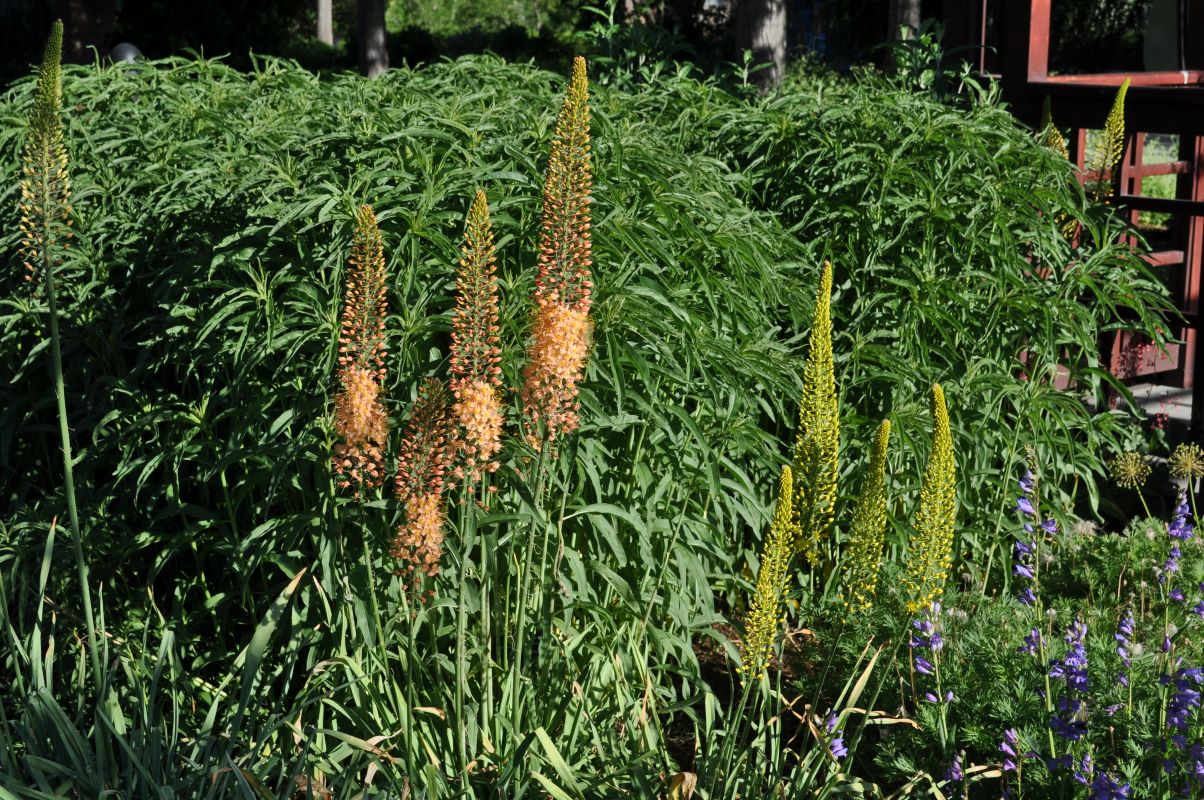
Foxtail Lily Hybrid Mix Eremurus x isabellinus 'Ruiter Hybrids'
Herbaceous, bulbous perennial. Long strap-like leaves grow basally. A tall, leafless central flowering stalk grows in mid spring producing a spiky cluster resembling a foxtail. Flowering occurs from the bottom of the spike moving upward. Prefers moderate to low amounts of water in well-drained soil.
-
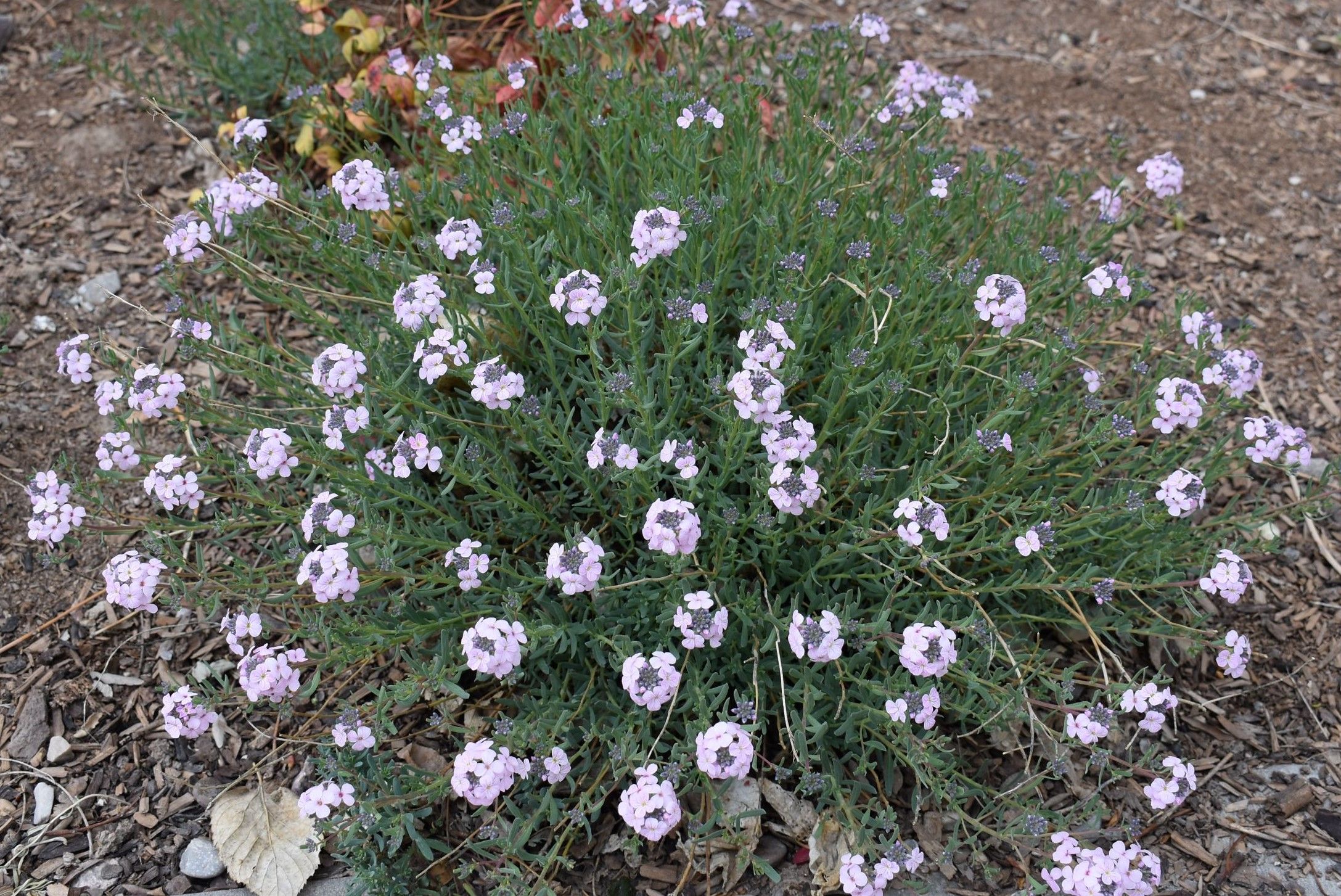
Fragrant Persian Stonecress Aethionema schistosum
Evergreen low growing perennial. Stonecress is a fragrant wildflower and will spread by reseading itself. Blue-green foliage can be enjoyed with the light pink flower clusters.
-
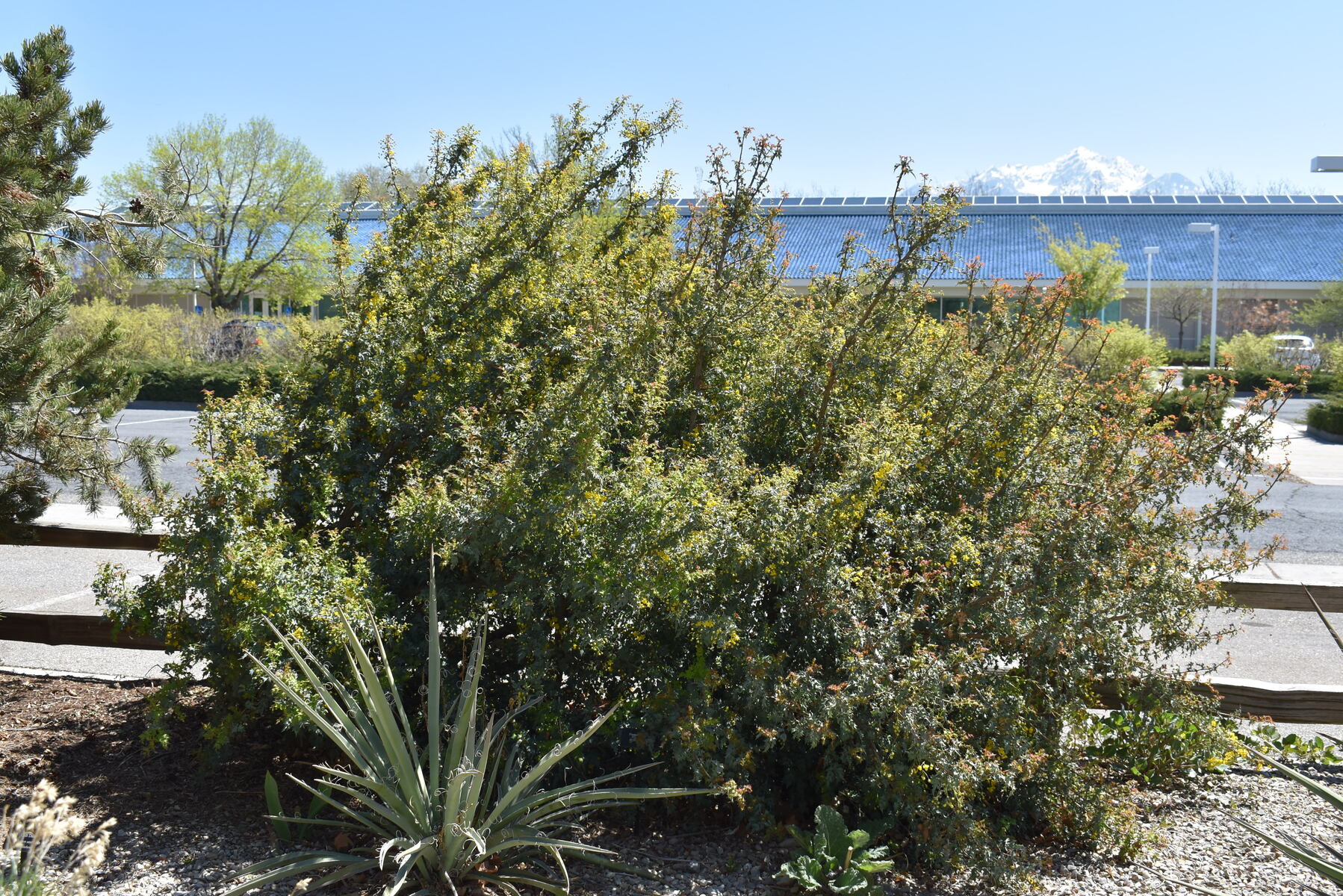
Fremont Mahonia Mahonia fremontii
This robust Utah native shrub produces spiny leaves that emerge burgundy, turn green and then blue green with maturity. Bright yellow flowers appear in spring to summer, turning to purple fruit that was used as dye by native Americans. The fruit is also edible, but extremely sour. It's form is uneven, but can be kept uniform with careful maintenance. It is adapted to poor soils and hot, dry conditions. It does not need additional irrigation once established.
-
French Tarragon Artemisia dracunculus var. sativa
This aromatic clump-forming perennial is most often used as a culinary herb. It has long, thin, bright green leaves, which can be used fresh or dried. The flowers are insignificant and bloom in late summer. Wild tarragon is native to many parts of the world, including Utah, but only this variety is cultivated for its flavor. The seeds are usually sterile, so it is best propagated by cuttings. It can be cut down in late winter or early spring to allow for fresh new growth.
-
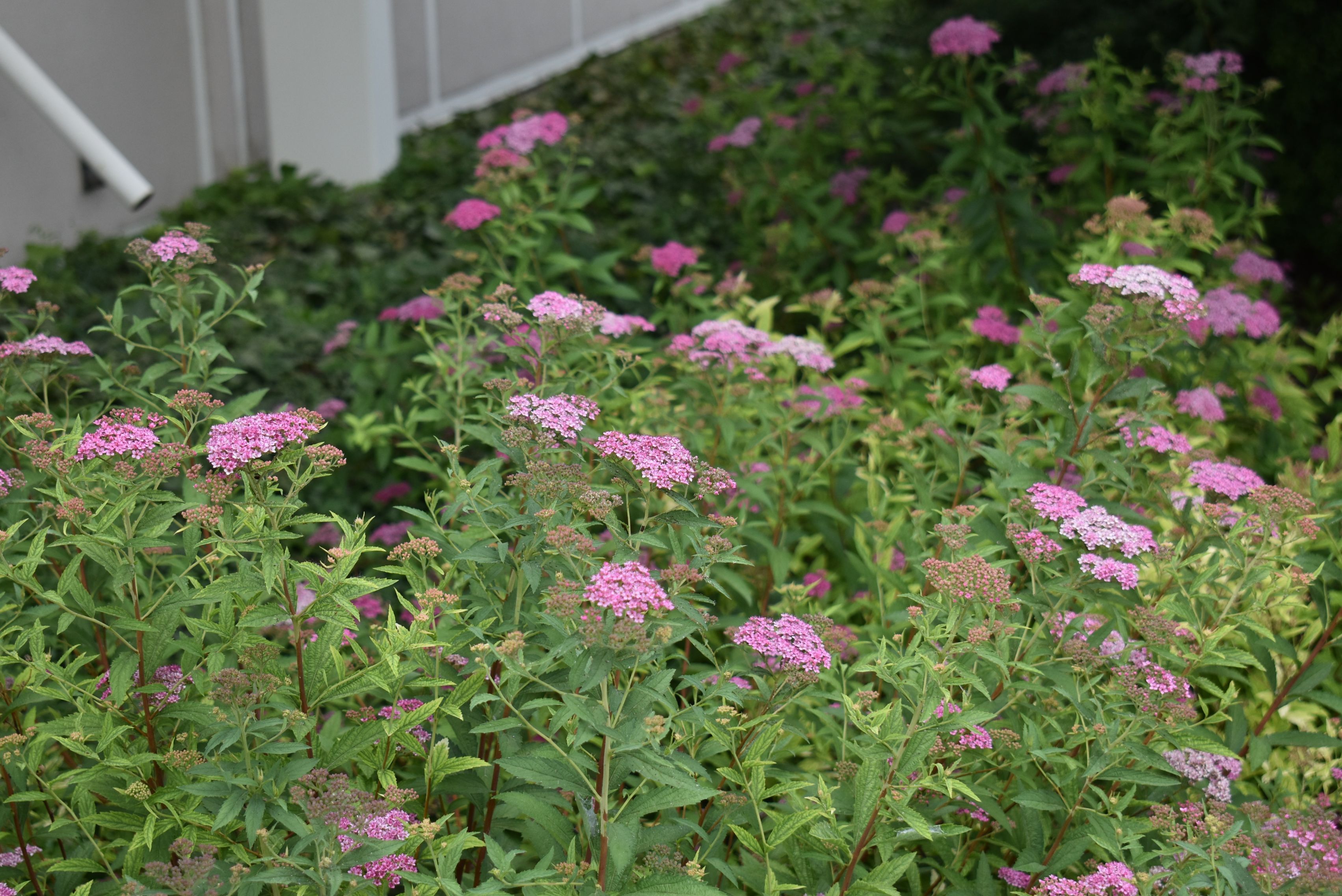
Froebelii Spirea Spiraea japonica 'Froebelii'
Medium to large, deciduous, clump-forming shrub. Lance-shaped, toothed leaves are burgundy-purple when they emerge, turning dark-green with maturity. Large-clusters of deep pink flowers bloom in mid to late-summer. Prefers fertile, moist soils but will tolerate some drought.
-
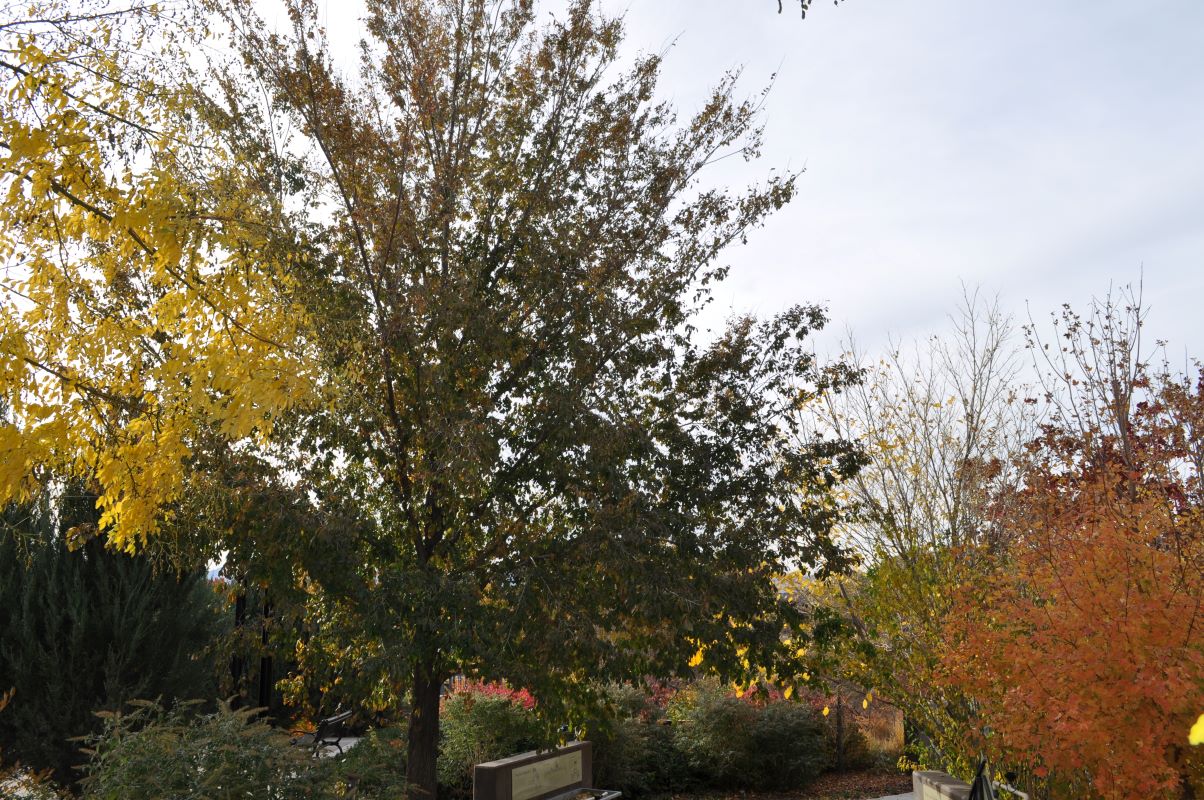
Frontier Elm Ulmus 'Frontier'
This variety of elm has striking red to purple fall color. It has a pyramidal shape with smooth grey-green bark. It shows superior resistance to Dutch elm disease.
-
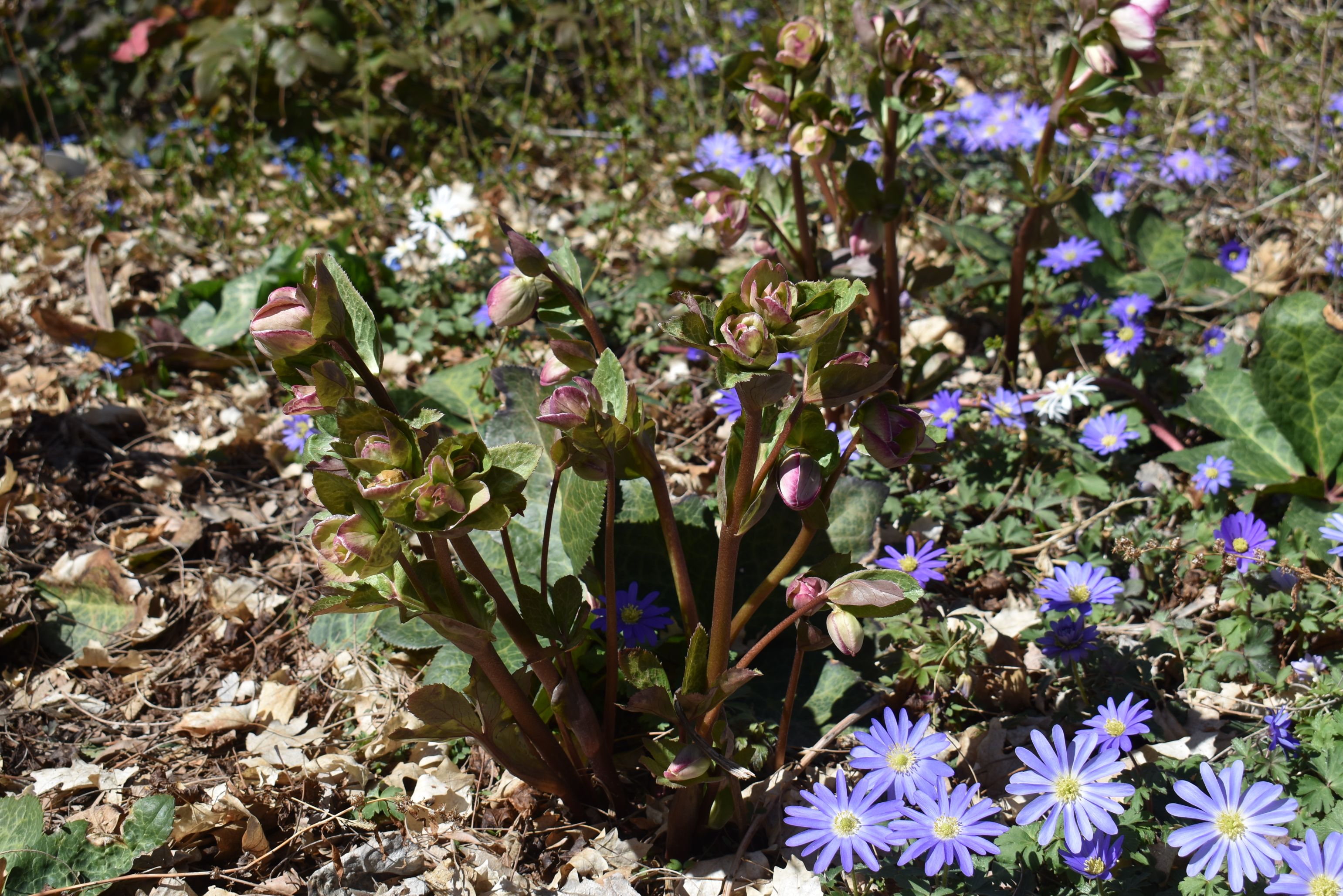
Frostkiss Glenda's Gloss Lenten Rose Helleborus 'EPB 25'
This Lenten Rose will create stunning and striking interest in those shady parts of the landscape. Off-white blossoms edged in violet sit atop upright, slender stems and droop over dark green, shimmery foliage. This evergreen perennial will begin to shine in the late winter and will continue through spring.
-

Frosty Shrubby Cinquefoil Potentilla fruticosa 'Monsidh'
Low-growing deciduous shrub. Large white rose-shaped flowers grow profusely from early-summer and lasting until fall. Green pinnate leaves are composed of 5-7 leaflets. Tolerant of many soil types and does best with moderate amounts of water, tolerating some drought once established. Recently moved to the genus Dasiphora but still more commonly referred to as Potentilla.
-
Furman's Red Texas Sage Salvia greggii 'Furman's Red'
This shrubby perennial has bright raspberry-red flowers that bloom sporadically from early summer through fall. Soft green leaves grow on upright woody stems. Tolerates drought and heat and thrives in well-drained soils. 'Furman's Red' is the hardiest cultivar of S. greggii and has survived well in our West Jordan garden for years, but this is the edge of its range and it may not always live through Wasatch Front winters.
-

Fairmount Ginkgo
Tall, columnar deciduous tree. Characteristic fan-shaped leaves turn bright yellow in the fall but last only briefly. Spring brings insignificant green flowers with a pleasant fragrance. This male cultivar does not set fruit. Very tolerant of urban areas and adapt well to pollution and compacted soils. A good choice for any landscape. Could be used more often.
Ginkgo biloba 'Fairmount'
Mature Size: 30-50' tall x 8-12' wide
-

False Spirea
Deciduous shrub. The coarse serrated odd-pinnate leaves balance the delicate foamy looking white blooms. Spreads aggressively by suckers, especially in loose soil.
Sorbaria sorbifolia
Mature Size: 5-10' tall and wide
-

Fama Pincushion Flower
This plant has very large blue-purple flowers held on long upright stems. It makes an excellent, long lasting cut flower. It has a very long bloom time with interesting flowers that attract butterflies and other beneficial pollinators.
Scabiosa caucasica 'Fama'
Mature Size: 18-20" tall x 13-15" wide
-

Fanfare Blanket Flower
This is a mounding perennial that produces bright yellow, red and orange blooms. This variety has fluted petals, which is an attractive departure from the species. Once the flower bloom is done, it turns to a red puffball, which can be removed but, since blanket flowers are so short-lived, can be allowed to reseed to begin new plants nearby. These perennials prefer lighter soil and moderate amounts of water.
Gaillardia 'Fanfare'
Mature Size: 12" tall x 18" wide
-

Fanfare Citronella Blanket Flower
This is a mounding perennial that produces bright yellow pinwheel blooms. This variety has fluted petals, which is an attractive departure from the species. Once the flower bloom is done, it turns to a red puffball, which can be removed but, since blanket flowers are so short-lived, can be allowed to reseed to begin new plants nearby. These perennials prefer light soils and moderate amounts of water.
Gaillardia 'Fanfare Citronella'
Mature Size: 18-22" tall x 12-16" wide
-

Feelin' Blue Deodar Cedar
With its unique spreading form, this evergreen is the lowest growing of the dwarf cedars. The blue-green foliage gives year-round interest and is the perfect specimen for smaller spaces, rock gardens, and containers.
Cedrus deodara 'Feelin' Blue'
Mature Size: 4-5' tall x 6-10' wide
-

Female Hardy Kiwi Vine
Sweet, small kiwis on a thornless vine. The vine can grow quite rapidly, so a good support system is necessary. They are heat-tolerant and do not like wet soils. The small, smooth-skinned green fruit tastes similar, but is sweeter than the larger kiwi fruit found in stores. They are eaten more like grapes. The fruit mature in September-October. ‘Issai’ is a slower growing, self-fertile variety, but planting a male vine can help increase fruit production. Fruit can be found one year after planting.
Actinidia arguta 'Issai'
Mature Size: 12-20' tall x 3-5' wide
-

Fendler's Barberry
This is a fast-growing shrub. It has rounded leaves and sharp thorns. The flowers are bright yellow and appear in the spring. Red fruit then develops and lasts through the winter. The fruit is edible tasting like tart cherries. To get a good fruit set, it is best to have at least two or three of these barberries for cross pollination. This barberry prefers rich soil and fairly consistent moisture.
Berberis fendleri
Mature Size: 6-8' tall and wide
-

Fens Ruby Cypress Spurge
Spreading herbaceous perennial with fine tezxtured foliage. New stems are red-ruby turning to blue-green in maturity. Stunning chartreuse flowers come on in early to mid summer. Spreads by underground stems. In certain areas it may become invasive. Good choice for a groundcover.
Euphorbia cyparissias 'Fens Ruby'
Mature Size: 10-12" tall x 15" wide
-

Fernbush
Semi-evergreen shrub native to the western United States. Foliage resembles fern-leaves somewhat like the garden tansy. White clusters of rose-like flowers appear in mid to late-summer. Bark is red and shreddy. Requires very little additional moisture once established. Will adapt to many soil types.
Chamaebatiaria millefolium
Mature Size: 4-6' tall and wide
-

Fernleaf Tansy
This perennial member of the sunflower family is grown mostly for fern-like leaves with curled margins. It produces button-like yellow flowers in the summer that, while not the main reason for growing this tansy, are an added benefit. It is said to have medicinal qualities and is possibly repellant to mosquitoes.
Tanacetum vulgare var. crispum
Mature Size: 6-24" tall and wide
-

Festiva Maxima Peony
Clump-forming, shrubby herbaceous perennial. Abundant mid-green deeply-lobed foliage grows on stiff upright stems. Large fragrant double white flowers are loose and irregularly margined. Center petals are flecked with red at the bases. Plant in fertile well-drained soils. Tolerates some drought once established.
Paeonia lactiflora 'Festiva Maxima'
Mature Size: 2-3' tall and wide
-

Fiesta Forsythia
This is an upright shrub that develops an arching habit as it matures. It has smooth, lemon yellow leaves that are edged with green. The flowers are yellow with four prominent petals, and develop in the spring. This forsythia will grow in average soils that have good drainage.
Forsythia x intermedia 'Fiesta'
Mature Size: 2-3' tall x 2-4' wide
-

Filigree Daisy
Lacy, semi-evergreen silver foliage forms a carpet throughout the year. Spring brings long-lasting, sulfur yellow flowers. It prefers well-drained soils, but is adaptable.
Anthemis marschalliana
Mature Size: 4-10" tall x 15-24" wide
-

Fine Line Buckthorn
Fern-like foliage and a columnar shape set this dark-green shrub apart. It works great in narrow spaces and is non-invasive thanks to its sparse, unviable seed. Its flowers are small and of no consequence.
Frangula alnus (syn Rhamnus frangula) 'Ron Williams'
Mature Size: 5-7' tall x 2-3' wide
-

Fire Chalice
Upright, weakly spreading herbaceous perennial native to the western United States. Dark-green lance-shaped foliage is slightly fuzzy. Bright orange tubular flowers bloom throughout the summer. Performs well with very little water. Some of the specimens in our garden receive no additional moisture. Attracts hummingbirds.
Epilobium (syn Zauschneria) californica
Mature Size: 12-18" tall x 12-24" wide
-
Fire Light Hydrangea
A reliable hydrangea with large flower panicles and strong stems. The long-blooming flower heads start out cream and age to pink then bright red, making great fresh or dried cut flowers. Very low-maintenance and hardy.
Hydrangea paniculata 'SMHPFL'
Mature Size: 6-8' tall and wide
-
Fire Spinner Ice Plant
A low-growing succulent, Fire Spinner likes the heat and should thrive in Utah's soil. Bright, tri-colored flowers cover fleshy green leaves in late-spring through summer. Do not overwater. Will require some additional water to perform well in the summer.
Delosperma 'P001S'
Mature Size: 2" tall x 12-18" wide
-

Firecracker Penstemon
Upright, woody-based, evergreen or semi-evergreen perennial with blue-green leaves. In early summer, bears tubular, bright scarlet flowers. Prefers poor to moderately fertile, well drained soil and full sun. Great for dry desert-scapes. Attracts butterflies.
Penstemon eatonii
Mature Size: 18-24" tall and wide
-

Firefly Coral Bells
A showy selection of a wildflower native to Arizona. Many tall, thin stalks hold clouds of fragrant, bright cherry-red flowers over neat mounds of scalloped green leaves. A hummingbird-friendly addition to pots and part-shade gardens.
Heuchera sanguinea 'Firefly'
Mature Size: 18" tall x 15" wide
-
Firefly Oriental Spruce
This dwarf spruce's new growth displays bright yellow, densely packed, classic thin needles that soften to a gold as the season progresses giving off that “firefly” light all year long. The vivid yellow needles contrast beautifully with the green interior foliage. This spruce is smaller in size and compact in habit. Putting this spruce in a shady area will decrease the yellow color in the leaves but placing it in direct afternoon sun can burn the foliage for the first few years until the roots get established.
Picea orientalis 'Firefly'
Mature Size: 6' tall x 4' wide
-

Firelight Spirea
Medium sized, rounded deciduous shrub. Produces abundant flat clusters or rose pink flowers in mid to late spring into the summer. Young leaves emerge yellow and red and turn dark green when mature. Removing older branches in the spring will promote healthy growth.
Spiraea japonica 'Firelight'
Mature Size: 2-3' tall and wide
-
Firepower Nandina
One of the more colorful nandinas with new foliage beginning a refreshing green color, taking on warm red highlights as it ages and turning fully red in fall. The vibrant color may last through the winter. ‘Firepower’ will add striking interest and beauty in borders, mass planting and containers. When given room to grow to its full potential, it will need very little care and no pruning.
Nandina domestica 'Firepower'
Mature Size: 12-30" tall and wide
-

Fireworks Goldenrod
Panicles of golden yellow flowers burst along stiff, thin branches in late-summer to early-fall. The stems form clouds of fine green foliage. It is tolerant of many soil conditions and requires little maintenance.
Solidago rugosa 'Fireworks'
Mature Size: 2.5-3' tall and wide
-

First Love Cheddar Pink
This compact perennial forms a mound of semi-evergreen foliage. Starting in late spring, delicate blossoms cover the foliage in abundance. The flowers range in color from vibrant and soft pinks to pure whites.
Dianthus 'First Love'
Mature Size: 12-18" tall and wide
-
First Snow Spirea
Dense, gracefully branching, deciduous shrub. Produces abundant pure white flowers in early-spring before the leaves emerge. Narrow, sea-green leaves grow on closely spaced, cascading branches. Excellent choice for covering exposed foundations.
Spiraea x cinerea 'Grefsheim'
Mature Size: 4-5' tall and wide
-
Flame Grass
A clump forming ornamental grass. Mid-green grass blades are tinged with red and turn a brilliant red-orange in the fall. The leaves retain a burgundy color through winter. Silvery seedheads appear in late summer turning to tan in the fall. It is tolerant of a wide range of soils but prefers regular watering.
Miscanthus 'Purpurascens'
Mature Size: 4-5' tall x 3' wide
-
Flower Carpet Pink Splash Groundcover Rose
This compact, groundcover rose is perfect for borders, mass plantings and containers. It has glossy green foliage which creates a beautiful backdrop for the blossoms. Spring brings an abundance of two-toned pink flowers that bloom throughout the summer and into the early fall.
Rosa 'Noasplash'
Mature Size: 2-2.5' tall and 3-4' wide
-

Flying Saucers Coreopsis
A compact coreopsis with solitary, yellow, daisy-like flowers that bloom from late spring to late summer. Grows best in dry to medium well drained soil in full sun. Loves poor or rocky soils. Prompt deadheading of spent flowers encourages additional blooming. Does not self seed. Tends to sprawl if grown in moist or fertile soil.
Coreopsis grandiflora 'Walcoreop'
Mature Size: 18-24" tall x 18" wide
-
Forest Pansy Redbud
Small, deciduous, purple-leaved understory tree. Available with either multiple stems or a single trunk. Numerous dark pink flowers bloom in early spring before the leaves emerge. Heart-shaped leaves emerge reddish-purple turning more green through the year. Difficult to transplant.
Cercis canadensis 'Forest Pansy'
Mature Size: 20-30' tall x 25-35' wide
-

Four-Wing Saltbrush
Very tough semi-evergreen shrub with variable form, native to western United States. Small silvery-gray leaves last most of the year. Tiny inconspicuous yellow flowers appear in spring. Dried fruits are interesting and can be used in flower arrangements. Best grown in a native-style landscape; may not be compatible in more formal plantings. Provides habitat for wildlife.
Atriplex canescens
Mature Size: 1-6' tall x 3-7' wide
-

Foxtail Lily Hybrid Mix
Herbaceous, bulbous perennial. Long strap-like leaves grow basally. A tall, leafless central flowering stalk grows in mid spring producing a spiky cluster resembling a foxtail. Flowering occurs from the bottom of the spike moving upward. Prefers moderate to low amounts of water in well-drained soil.
Eremurus x isabellinus 'Ruiter Hybrids'
Mature Size: 3-4' tall x 2' wide
-

Fragrant Persian Stonecress
Evergreen low growing perennial. Stonecress is a fragrant wildflower and will spread by reseading itself. Blue-green foliage can be enjoyed with the light pink flower clusters.
Aethionema schistosum
Mature Size: 10" tall x 15" wide
-

Fremont Mahonia
This robust Utah native shrub produces spiny leaves that emerge burgundy, turn green and then blue green with maturity. Bright yellow flowers appear in spring to summer, turning to purple fruit that was used as dye by native Americans. The fruit is also edible, but extremely sour. It's form is uneven, but can be kept uniform with careful maintenance. It is adapted to poor soils and hot, dry conditions. It does not need additional irrigation once established.
Mahonia fremontii
Mature Size: 3-8' tall and wide
-
French Tarragon
This aromatic clump-forming perennial is most often used as a culinary herb. It has long, thin, bright green leaves, which can be used fresh or dried. The flowers are insignificant and bloom in late summer. Wild tarragon is native to many parts of the world, including Utah, but only this variety is cultivated for its flavor. The seeds are usually sterile, so it is best propagated by cuttings. It can be cut down in late winter or early spring to allow for fresh new growth.
Artemisia dracunculus var. sativa
Mature Size: 3-4' tall x 2-5' wide
-

Froebelii Spirea
Medium to large, deciduous, clump-forming shrub. Lance-shaped, toothed leaves are burgundy-purple when they emerge, turning dark-green with maturity. Large-clusters of deep pink flowers bloom in mid to late-summer. Prefers fertile, moist soils but will tolerate some drought.
Spiraea japonica 'Froebelii'
Mature Size: 3-4' tall x 4-5' wide
-

Frontier Elm
This variety of elm has striking red to purple fall color. It has a pyramidal shape with smooth grey-green bark. It shows superior resistance to Dutch elm disease.
Ulmus 'Frontier'
Mature Size: 30-40' tall x 20-30' wide
-

Frostkiss Glenda's Gloss Lenten Rose
This Lenten Rose will create stunning and striking interest in those shady parts of the landscape. Off-white blossoms edged in violet sit atop upright, slender stems and droop over dark green, shimmery foliage. This evergreen perennial will begin to shine in the late winter and will continue through spring.
Helleborus 'EPB 25'
Mature Size: 18-24" tall and wide
-

Frosty Shrubby Cinquefoil
Low-growing deciduous shrub. Large white rose-shaped flowers grow profusely from early-summer and lasting until fall. Green pinnate leaves are composed of 5-7 leaflets. Tolerant of many soil types and does best with moderate amounts of water, tolerating some drought once established. Recently moved to the genus Dasiphora but still more commonly referred to as Potentilla.
Potentilla fruticosa 'Monsidh'
Mature Size: 18-24" tall x 36" wide
-
Furman's Red Texas Sage
This shrubby perennial has bright raspberry-red flowers that bloom sporadically from early summer through fall. Soft green leaves grow on upright woody stems. Tolerates drought and heat and thrives in well-drained soils. 'Furman's Red' is the hardiest cultivar of S. greggii and has survived well in our West Jordan garden for years, but this is the edge of its range and it may not always live through Wasatch Front winters.
Salvia greggii 'Furman's Red'
Mature Size: 24-36" tall x 18" wide